Of every course that I’ve played, there probably isn’t one that would elicit stronger opinions from golfers than Mike Strantz’s Tobacco Road. It has to be one of the boldest courses ever designed, with fairways winding through 40 foot high mounds, greens located in 15X100 ft. trenches, and bunkers that look like they must have been shaped by the air force. In addition to being completely original, some of these holes are absolutely brilliant. Among well-traveled people, I wouldn’t be surprised if there’s pretty good agreement that the best 3 or 4 holes here would hang with the best 3 or 4 holes on almost any course in the world.
But Tobacco Road also has some of the worst holes that I’ve ever played. Several greens are extremely shallow (like 15-20 ft.) and very wide (in some cases 60-80 yards) with junk short and long. In addition to being, in my opinion, aesthetically ugly, these shots are almost impossible to play for higher handicap golfers. Even if part of the green is a bit deeper, if you successfully play to it, you’ll have a 70 or 80 ft. putt where you can’t go at the hole. If they go at the hole unsuccessfully, the next few shots are likely to be back-and-forth across the green from unforgiving hardpan sand (all of the course’s bunkers are waste bunkers). This, plus blindness and narrowness on the way to several greens (but usually not in the driving zone) makes Tobacco Road one of the hardest courses for high handicap golfers that I’ve seen.
Low handicap golfers, however, are likely to tear this place up. The landing areas for good drives are all very wide and you’ll be playing a short iron to all these wide, shallow greens. As long and the course isn’t wet or you pick your irons clean (even though it’s on pure sand, there are a lot of soggy catchment basins), the low handicapper should shoot well because the course isn’t very long. Especially given their proximity, I see this course as sort-of an anti-Pinehurst no.2; extremely hard for the high handicapper, but easy for the low handicapper. Lots of trouble in front, but usually less to the sides. Often no reasonable place for a high handicapper to miss and if there is, it usually isn’t somewhere in front of the green.
We find another of the course’s anti-Pinehurst no. 2—in fact anti-Donald Ross—aspects at the first hole: a long, difficult par 5 with potentially several blind shots. More a kick in the balls than a gentle handshake. And also a very good example of a hole that’s tough for high handicappers but not for low handicappers. It’s a pretty noteworthy drive—between two 40 ft. tall dunes. It’s only about 210 yards to get past the first dune on the right from near the tips. But if you only carry the ball 150 yards, you’re going to have to navigate the probably 20 ft. wide opening between them.
But Tobacco Road also has some of the worst holes that I’ve ever played. Several greens are extremely shallow (like 15-20 ft.) and very wide (in some cases 60-80 yards) with junk short and long. In addition to being, in my opinion, aesthetically ugly, these shots are almost impossible to play for higher handicap golfers. Even if part of the green is a bit deeper, if you successfully play to it, you’ll have a 70 or 80 ft. putt where you can’t go at the hole. If they go at the hole unsuccessfully, the next few shots are likely to be back-and-forth across the green from unforgiving hardpan sand (all of the course’s bunkers are waste bunkers). This, plus blindness and narrowness on the way to several greens (but usually not in the driving zone) makes Tobacco Road one of the hardest courses for high handicap golfers that I’ve seen.
Low handicap golfers, however, are likely to tear this place up. The landing areas for good drives are all very wide and you’ll be playing a short iron to all these wide, shallow greens. As long and the course isn’t wet or you pick your irons clean (even though it’s on pure sand, there are a lot of soggy catchment basins), the low handicapper should shoot well because the course isn’t very long. Especially given their proximity, I see this course as sort-of an anti-Pinehurst no.2; extremely hard for the high handicapper, but easy for the low handicapper. Lots of trouble in front, but usually less to the sides. Often no reasonable place for a high handicapper to miss and if there is, it usually isn’t somewhere in front of the green.
We find another of the course’s anti-Pinehurst no. 2—in fact anti-Donald Ross—aspects at the first hole: a long, difficult par 5 with potentially several blind shots. More a kick in the balls than a gentle handshake. And also a very good example of a hole that’s tough for high handicappers but not for low handicappers. It’s a pretty noteworthy drive—between two 40 ft. tall dunes. It’s only about 210 yards to get past the first dune on the right from near the tips. But if you only carry the ball 150 yards, you’re going to have to navigate the probably 20 ft. wide opening between them.
If you’ve hit a good drive up the left, you’ll have a partial view through a cleft in another dune ridge that crosses the fairway about 120 yards short of the green. Although you have to have played the course or taken a look over the ridge, it’s a great second shot for good players because the fairway on the other side is wide, but there’s a huge advantage to being up the left side. The left side of the green is open while the right side is obscured by another ridge with bunkers. I thought that the green was the most beautiful on the course; it sits gently on the land and runs front-to-back with the general slope. Despite the difficulties for higher handicappers, I thought that this was a great hole and I was really excited to see what comes next.
The second hole continues with the visual confusion. You drive over a huge waste bunker, which depending on which of the back tees you play, is a 220-240 yard carry. If you can’t carry it (in which case, you should move up a set of tees), you have to play way out to the right and will have a completely blind shot. But this drive is one of many examples of something that I don’t really like: if you can make a carry, the fairway is unmissably wide. If you can’t, either the shot’s unplayable or you have to take some bizarre alternative route.
The third is probably my favorite par 3 on the course. The green is almost 60 yards deep but it’s very interesting, with a large swale in the middle third and a ridge on the right that enables you to work the ball to back hole locations. You have to be accurate, but the fact that the whole green is accessible and the interesting contours make this one of the better, and less controversial holes on the course.
Another one of the best and least controversial holes is the dogleg left, short par 5 fourth. It’s just a great hole. The dominant feature here is the huge waste bunker that runs from the landing area to the green. The closer you keep your ball to it, the easier it will be to reach the green in two. But the bunker cuts into the lay-up zone so if you drive it out to the right, you’ll have to figure out how much of the bunker you can carry. The further right you go, the blinder the shot (but it’s wide open) and the more awkward the angle for the approach. If you’re too far right, an oak tree right of the green will partially block a shot to the back of the green. If you go for it in two, you can use the slopes short and right of the green to run your ball onto the green. It’s a great hole that works for everyone.
I think that the short par 4 fifth is also a great hole, but there’s some serious danger out there. You can go straight for the green to the left with only about a 210-230 yard carry over the sand. Again, the fairway to the right is very wide and you only need to go about 200-215 if you lay-up. But the green is severe; shallow from the lay-up area, with a false front that’ll take your ball 25 yards back off the front of the green. There’s a reasonable amount of room up there, but make sure that you take enough club and err a bit right.
After the first five holes, I thought that I might be playing one of the small handful of best courses that I’ve played. My view started to change at the short par 3 sixth. It starts with the routing--the sixth green and seventh tees are right behind the fifth green, but we must walk ~150 yards back to get to the sixth tees. Then the hole features one of the course’s unfortunate signature features: a green that’s about 15 ft. deep in many places and 60 yards wide. And there are about 2 acres of tee boxes. A lot of people might like the flexibility that this brings, but it just strikes me as an architect not being sure about what hole he wanted to design, so he tried to incorporate every design into one. In any case, if you’re unsure about your distances, play to the deeper left side of the green.
The par 4 seventh isn’t a bad hole, but not my favorite. The fairway is blind, but it’s about 75 yards wide. The objective is to drive it as far as you can, so maybe the idea was ‘let’s see how hard you can swing and how solid of contact you can make under uncertainty.’ The green is large and undulating and while a long drive is probably the most important thing, being up the left side is good too.
I’m also not a fan of the long par 3 eighth. The green is hook shaped from shot left to long right around a bunker. There’s a huge tier in the left side and the back right is very shallow over a bunker. Back left pins aren’t bad, but you pretty much either get the distance right or you have a very hard second shot.
I’ve heard about and read a lot of complaining concerning the par 4 ninth. And it’s completely justified. The hole bottlenecks right where the high handicapper is going to land their drive but beyond that, it’s wide open. But the real trouble is on the approach; the green is up a waste bunker-covered hill and sits in a saddle about 30 feet wide and 40 yards deep. There’s effectively zero width to the green but the area is concave so if you can get your ball up there, you’ll have a decent shot. But that’s the problem—it’s very difficult to get up there. The lay-up area short-left is too small for higher handicappers to hit with any consistency. I would imagine that a pretty high percentage of golfers don’t finish this hole.
The long par 4 tenth is more straight-forward, doglegging right along a massive waste bunker. The green is open from the front-left, so it’s actually best to hit a long drive to the outside of the dogleg. The green is large and one of the more interesting on the course.
The par 5 eleventh hole seems to be a lot of people’s favorite at Tobacco Road and I think that there’s good reason for that. The drive is wide open with a waste bunker running down its right side. It’s natural to assume that it’s best to keep your drive close to this bunker and that’s correct. The approach to the green from here is quite something. The bunker on the approach to the green looks like it was shaped by a few B-52s. If you go for it, you’d better hit it solid (although I was able to get out of the bunker…).
The lay-up is really interesting because there are a few options. The safest is to keep it about 90-100 yards short of the green. If you go further, you have to carry part of the bomb crater bunker. It looks like there isn’t a lot of room up there, but there is. And if you go a bit further right, you can run the ball onto the front left of the green. It’s a great hole because there’s a lot of drama and there are a lot of reasonable but interesting options for everyone from the low to the high handicapper.
The par 4 twelfth gives lower handicappers a taste of what higher handicappers have been experiencing throughout: the fairway narrows right where you want to land your drive. Unless you lay up, you need to be very accurate or be able to carry it 250-270. The green has a huge waste bunker and ridge on its left and it’s very important to approach from the right side. Because that’s impossible unless you’ve driven it 300 or are approaching from a waste bunker, play to the front right.
Despite the severity so far, Tobacco Road doesn’t start to get weird until the par 5 thirteenth. The drive is diagonal along a bunker on the right, but you always need to keep it under about 280 because on any line, the ball can run through the fairway. The second is blind and confusing, but just pick a club that gets you 100-140 yards from the green—it’s wide open at this distance. If you lay up closer, you’ll have to keep it left of the bunker that you can see on the right (you can’t see it, but there’s room there).
The green is in a trench that, continuing the war analogies, looks like something out of WWI. And your score is about as likely to get slaughtered here. It’s maybe 20 ft. deep, 60 feet wide, and except for about a 15 ft. wide slice on the right, completely blind. It’s very difficult to judge distance here; I hit what I though was a great shot and it got stuck on one of the mounds short of the green. Oh well.
The downhill par 3 fourteenth over a pond is really pretty—but tough. It’s quite short if the flag is in the front left, but the green becomes a very small target for the ~170 yard shot if the flag is in the back.
After playing the fourteenth hole, I had one of my more special experiences on a golf course: I got completely lost trying to find the fifteenth hole. If you follow the cart path, the next hole you come to is the eighteenth…and to be honest, it might be best if you just continued on, played it, and finished with a 15 hole round. Because once you do find the fifteenth hole, you’re at the beginning of probably the worst three hole stretch that I’ve played.
Actually, it starts well. The drive on fifteen is one of the most attractive on the course. You can only see part of the fairway, but enough so that it isn’t too intimidating (there’s also plenty of room over the trees on the right). Then things go completely wrong. Again, the culprit is a green that’s about 25 ft. deep and this time, about 70 yards wide. But the real problem here is that it isn’t just a wide strip—it’s sort-of S-shaped. And it’s fronted by a variety of bunkers, mounds, and tufts of grass. So you have absolutely no idea where you can hit the ball. It’s impossible to get a yardage because the distance to the middle of the green gives you no sense of the distance to the far wings. And even if you did know the distance, you wouldn’t have any sense of where you can miss and what the distances are to hit the green if you miss slightly left or right.
To be fair, when I played, the flag was on the left, which is probably the most confusing part of the green to hit to. If the flag is on the right, it might be a little bit more comprehensible, especially if you’re in the left side of the fairway. But—and I’m generally a huge defender of blind shots—there’s too much uncertainty in playing to any flag and nowhere to play safe. You can play to a more open area, but the next shot might be impossible.
To be fair, when I played, the flag was on the left, which is probably the most confusing part of the green to hit to. If the flag is on the right, it might be a little bit more comprehensible, especially if you’re in the left side of the fairway. But—and I’m generally a huge defender of blind shots—there’s too much uncertainty in playing to any flag and nowhere to play safe. You can play to a more open area, but the next shot might be impossible.
A peculiar amenity tells you quite a bit about the short par 4 sixteenth—a course-appointed ball spotter on a dune on the corner of the dogleg left who comes and tells you where to hit the ball. And you’ll need him, probably even if you’ve played the course before, because it looks like you’re hitting into a sea of rough and bunkers. The best line is the left edge of the nearest line of trees in the distance. There’s about 60 yards deep of fairway to hit to here but if you go right, you can run out of fairway if you go more than about 220 yards. But you’ve got to carry it about 160 even from the forward tees to carry the junk and that can lead to some unpleasant surprised as I learned from one of my playing partners.
Even if you hit the fairway and have a perfect yardage, you have a variety of problems. The fairway is full of collection areas and drains and there’s a good chance that your ball is in a divot and if it’s wet, that your lie is really soggy. And the green is one of the silliest that I’ve ever seen. It has a false front that takes your ball 30 yards back off the front of the green. But it has another tier in the middle that’s so steep that if you hit it, your ball will roll back off the front of the green, 30 yards down the fairway. You need to be very precise with your distance and spin control here, or the shot to the green is basically unplayable.
The short downhill par 3 seventeenth is about 3 or 4 pretty good holes, but one bad one because Strantz decided that it would be all of them at the same time. Actually to this pin on the left side of the green, it’s a perfectly good downhill par 3 to a small green. But the green runs another 85 yards to the right, with distinct left, middle, and right sections. The teeing grounds are about 100 yards wide. And the eighteenth tee is actually right behind the sixteenth green, so the routing is a mess, especially if the flag is on the left side.
I’d have been interested to play the left tee/right pin combination, which would have been an interesting semi-blind shot over a mound. But as we can see in the second picture, this area is probably too small and slopes away from the angle of play into junk. So I’m not sure that that iteration of the hole would work, although it would make the routing more coherent.
I’d have been interested to play the left tee/right pin combination, which would have been an interesting semi-blind shot over a mound. But as we can see in the second picture, this area is probably too small and slopes away from the angle of play into junk. So I’m not sure that that iteration of the hole would work, although it would make the routing more coherent.
I don’t think that the long par 4 eighteenth is a bad hole in it’s own right, but it’s too hard for most golfers. And given all that we’ve just been through, that makes it a bad hole because it just piles on. It’s an almost impossible drive for weaker players because even though the carry to the fairway from the forward tees is about 130 yards, it’s at least 20 feet uphill over another sandy bomb crater. Again, the hole greatly favors long hitters because the further you go, the wider it is. The green is deep but narrow, with severe fall offs on both sides. It’s a very difficult shot for a low handicapper. If you’re a higher handicapper, you’ll break your record for the amount of times that you pick up in a round…if you haven’t already.
Tobacco Road is a very tough course to rate because it has more variance in the quality of the holes than any course that I’ve played. Some of the holes (1,4,11) are among the best that I’ve played. Most of the rest are good to very good, even if sometimes a bit questionable (i.e. 13). But six holes (6,9,15-18) are questionable-in-a-bad-way to simply horrible. And the routing of the latter is a mess too. I think that there’s a trade-off between good/bad routings and good/bad holes where at least if you’re going to sacrifice routing coherence, you should at least use that to build better holes. Here, the worst parts of the routing (5-7, 15-17) also produce the worst holes (6,15-17). I can’t believe that even if the property were awkward, such a lose-lose situation couldn’t have been avoided.
There were probably a lot of ways to solve these problems. One would be to put a par 3 in the 180 yard walk between 12 and 13 and get rid of the par 3 seventeenth. Then 15 and 16 could be a simple out and back starting from the 16th green. That would solve two routing problems and three bad hole problems.
And then you’d have what this course should be: not only one of the most original public golf courses in the country, but one of the best. The course does pretty well in the rankings as it is but it’s very controversial and I think that much of this was just unnecessary. I suspect that it would do a lot better if it had been toned down. A few quirks like the thirteenth green can be great, but there has to be balance. And that’s just lacking at Tobacco Road. And again, opposite to the spirit of Pinehurst no. 2, a lot of these quirks are manageable for good players but just kill high handicappers, especially those who struggle to carry the ball more than 150 yards off the tee…which is a lot of people.
Now you might say ‘well, isn’t the fact that it’s unique in the world of golf justification enough? Just like there’s nothing like Pinehurst no. 2, doesn’t it count in favor of Tobacco Road that there’s nothing like Tobacco Road?’ But that supposes that you couldn’t keep the essential Tobacco Roadyness if you changed a few holes. I think that you could. The four par 5s wouldn’t change and those are the holes that most people remember for the better. I’m not saying that they should get rid of some of the bold green contours or the wild waste bunkers. But fewer wide, skinny greens and a more cohesive routing wouldn’t cost this course much of what people see as special. It’d be a little more like Caledonia, which I find to be a superior Strantz course, but it’d keep the wildness that rightly makes Tobacco Road a noteworthy course.
Now you might say ‘well, isn’t the fact that it’s unique in the world of golf justification enough? Just like there’s nothing like Pinehurst no. 2, doesn’t it count in favor of Tobacco Road that there’s nothing like Tobacco Road?’ But that supposes that you couldn’t keep the essential Tobacco Roadyness if you changed a few holes. I think that you could. The four par 5s wouldn’t change and those are the holes that most people remember for the better. I’m not saying that they should get rid of some of the bold green contours or the wild waste bunkers. But fewer wide, skinny greens and a more cohesive routing wouldn’t cost this course much of what people see as special. It’d be a little more like Caledonia, which I find to be a superior Strantz course, but it’d keep the wildness that rightly makes Tobacco Road a noteworthy course.
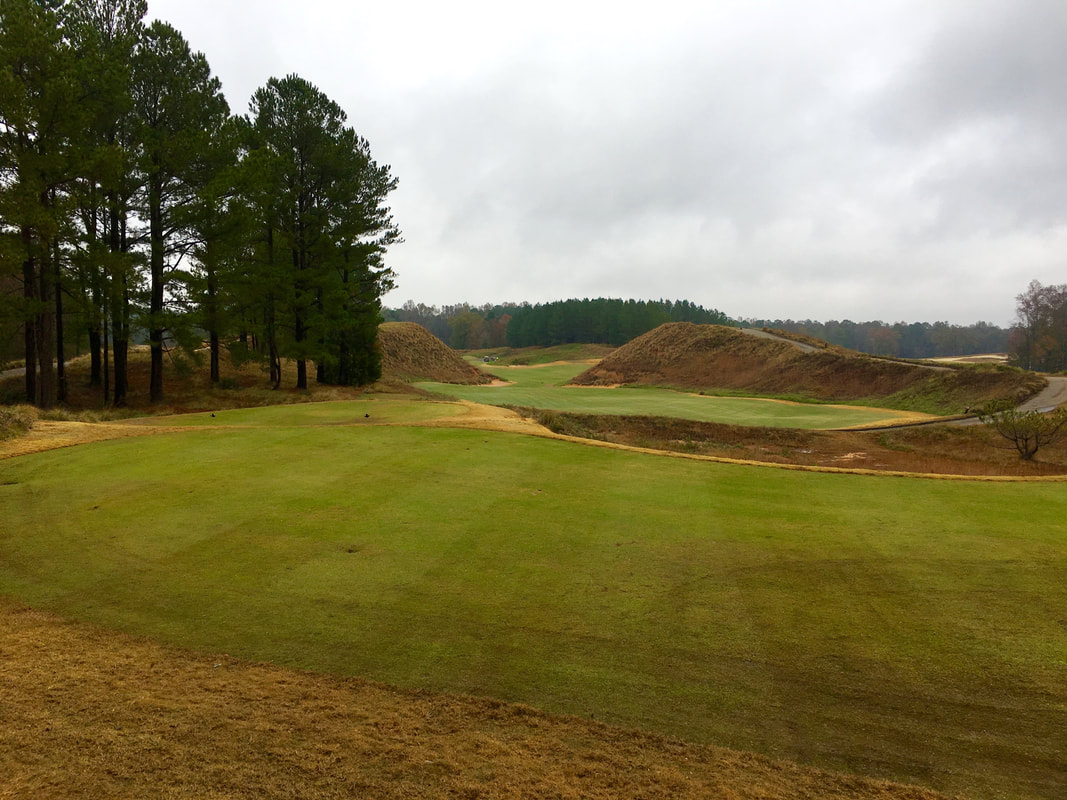
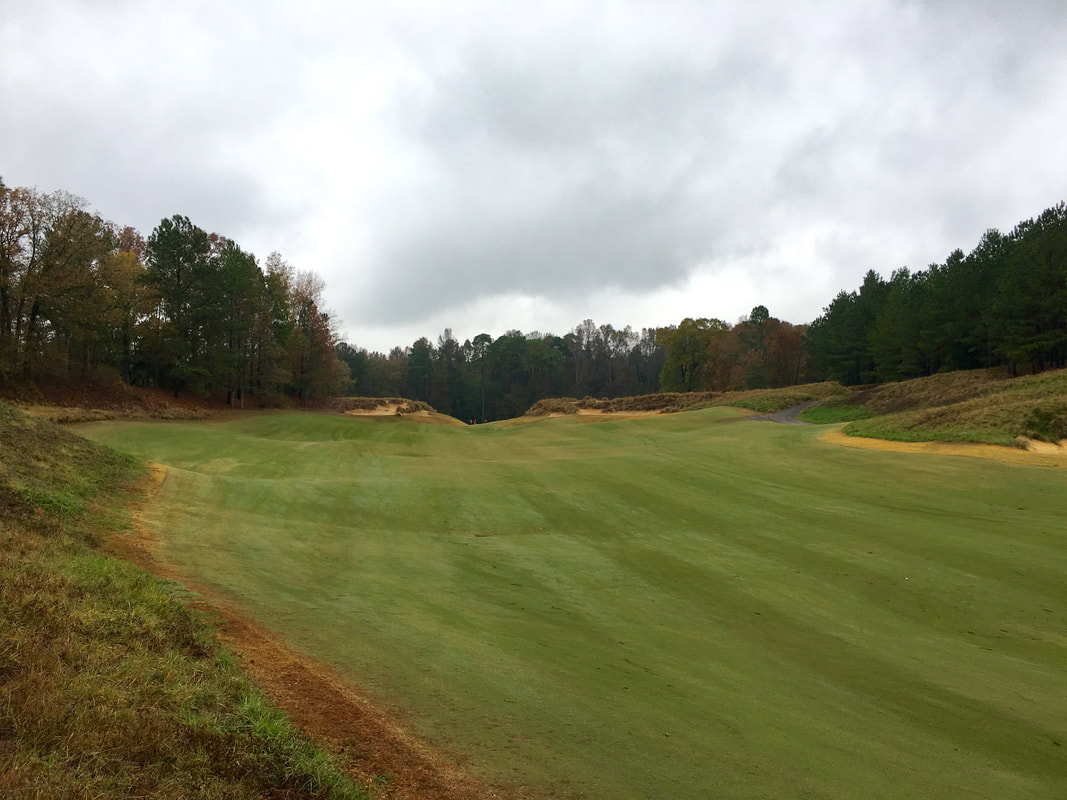
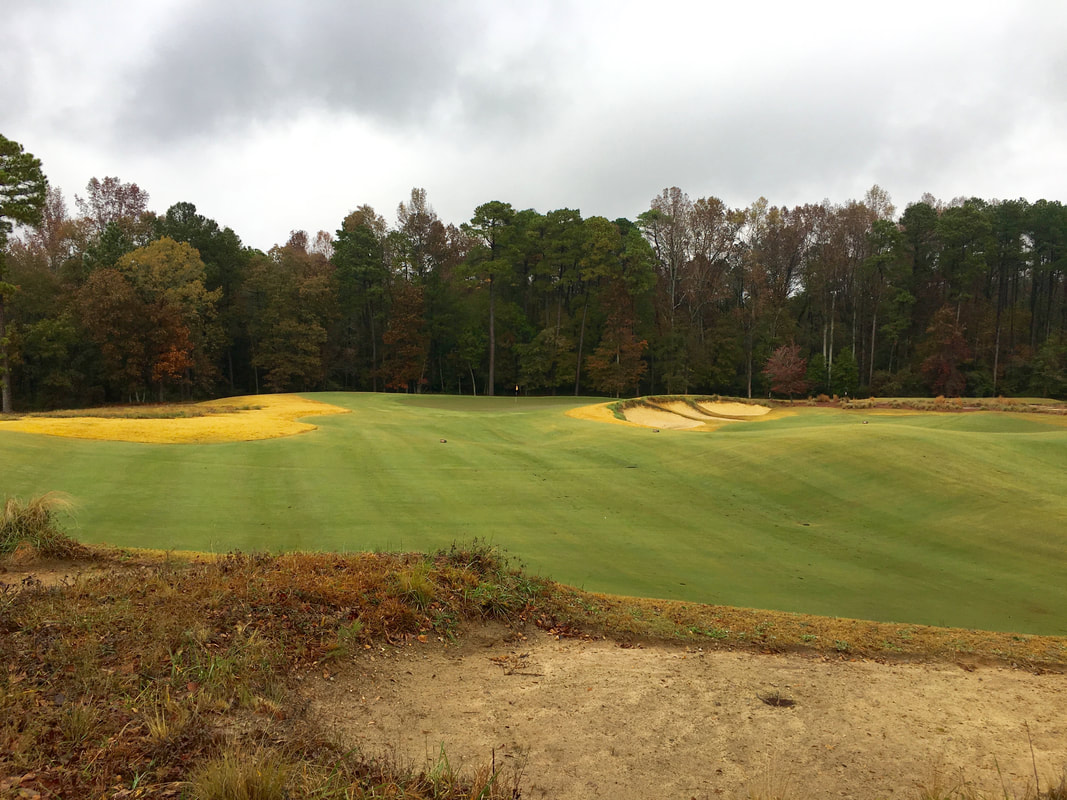
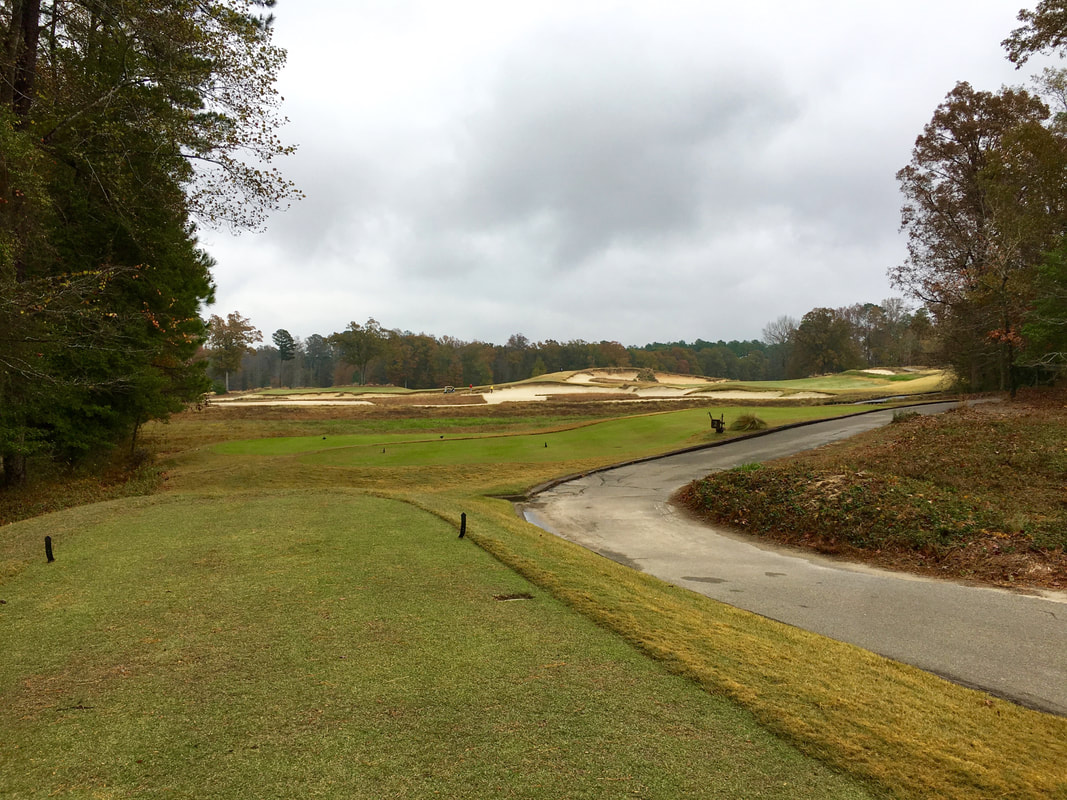
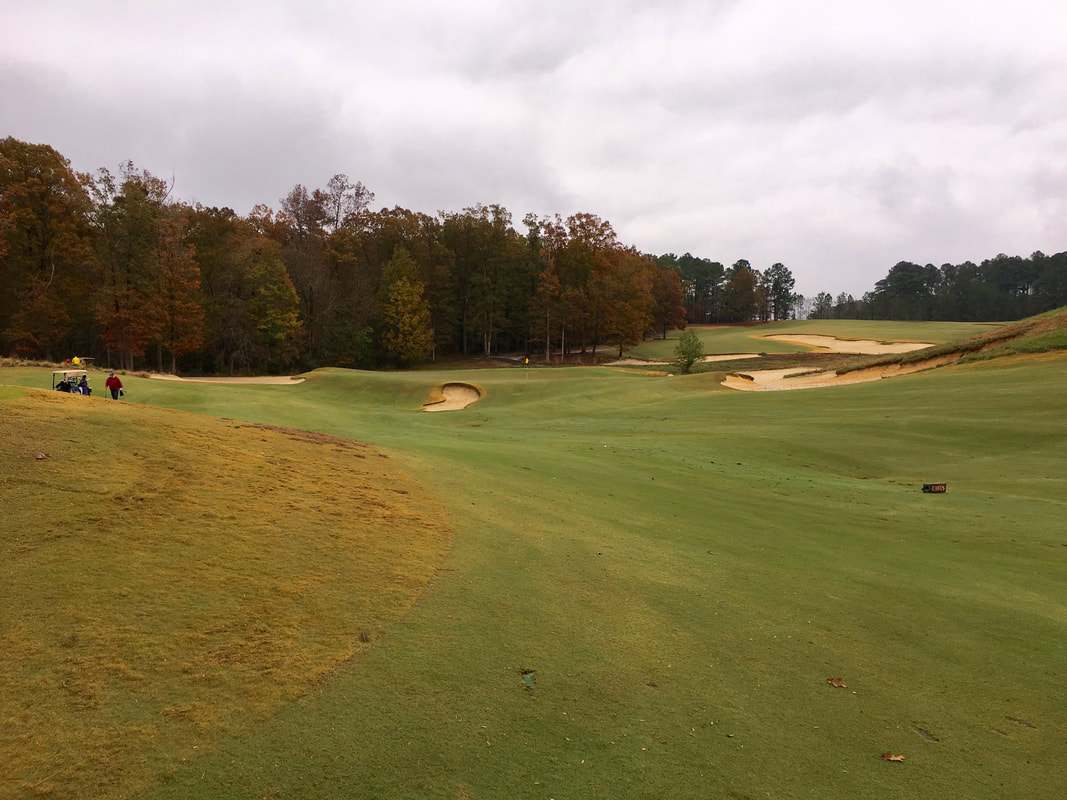
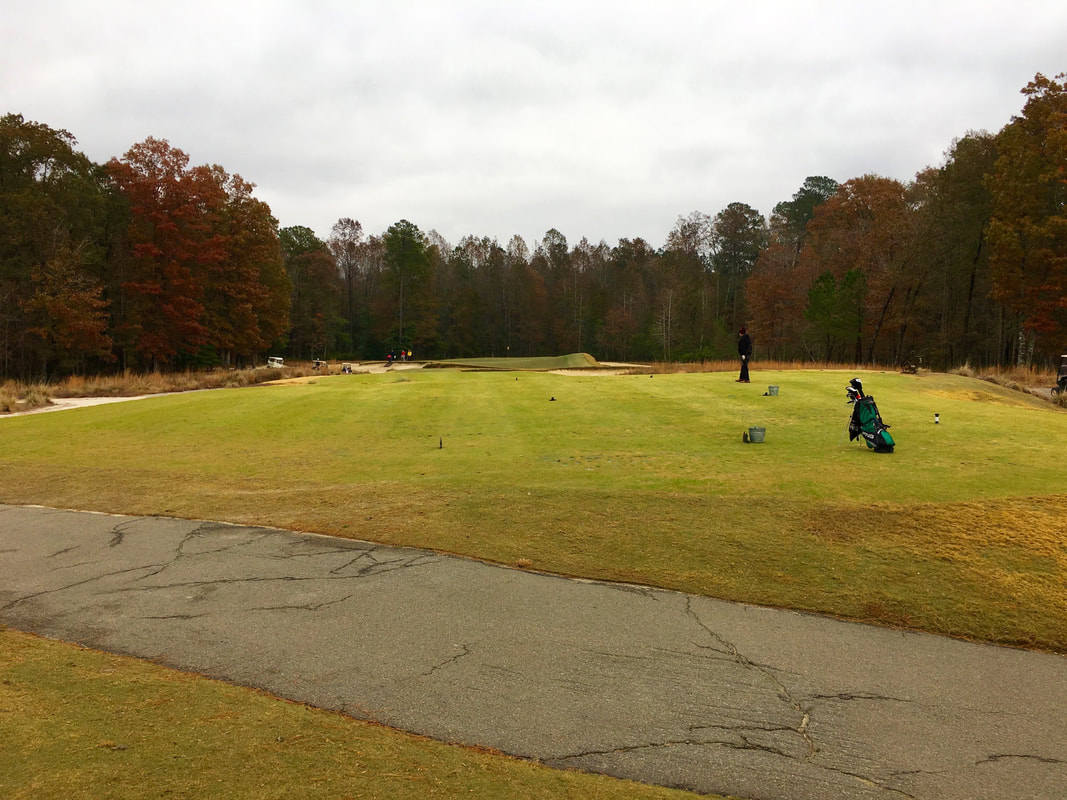
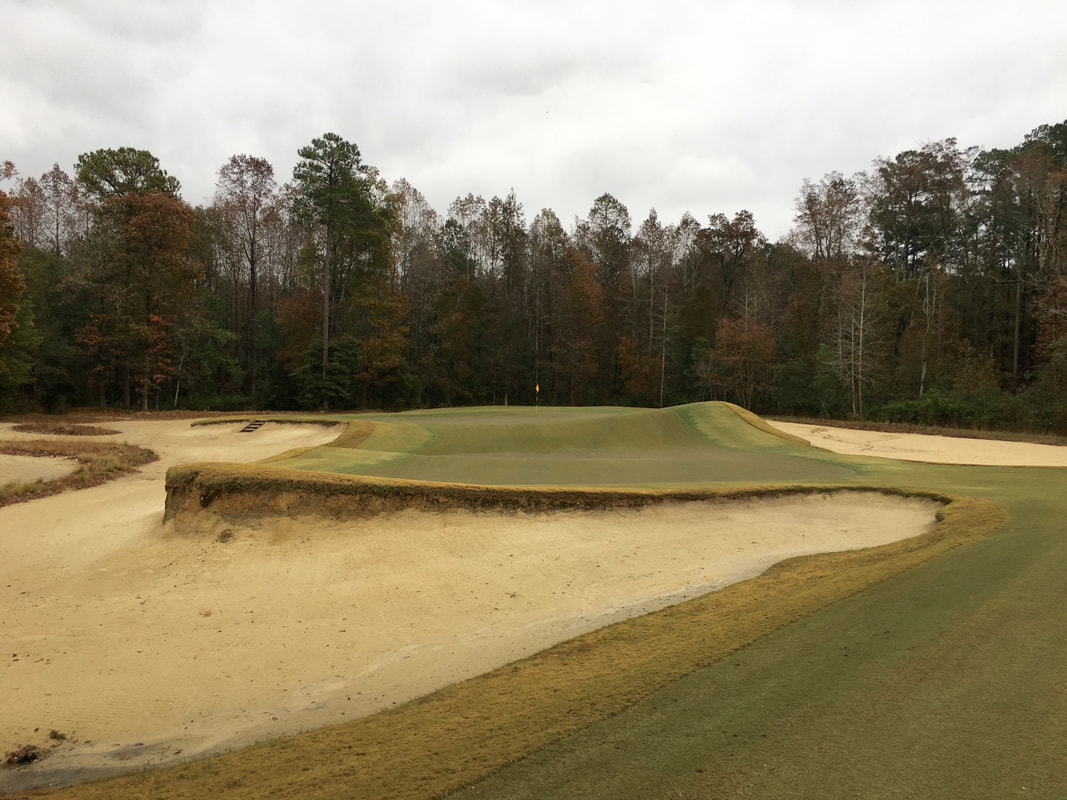
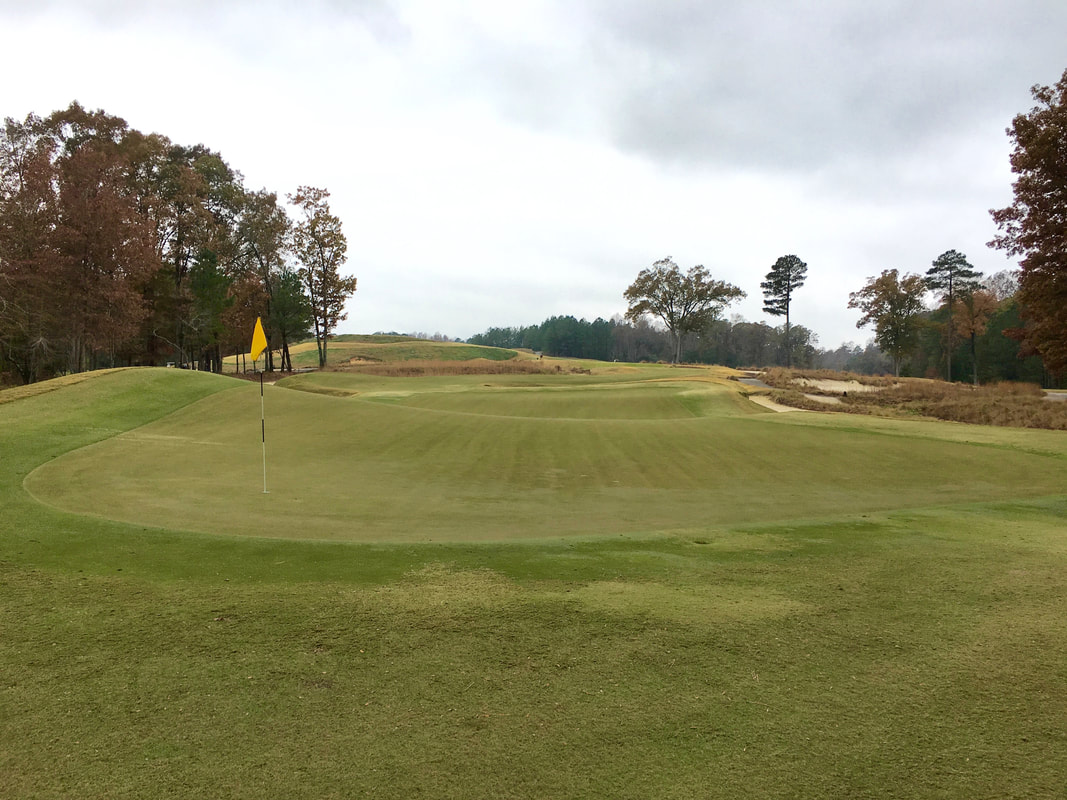
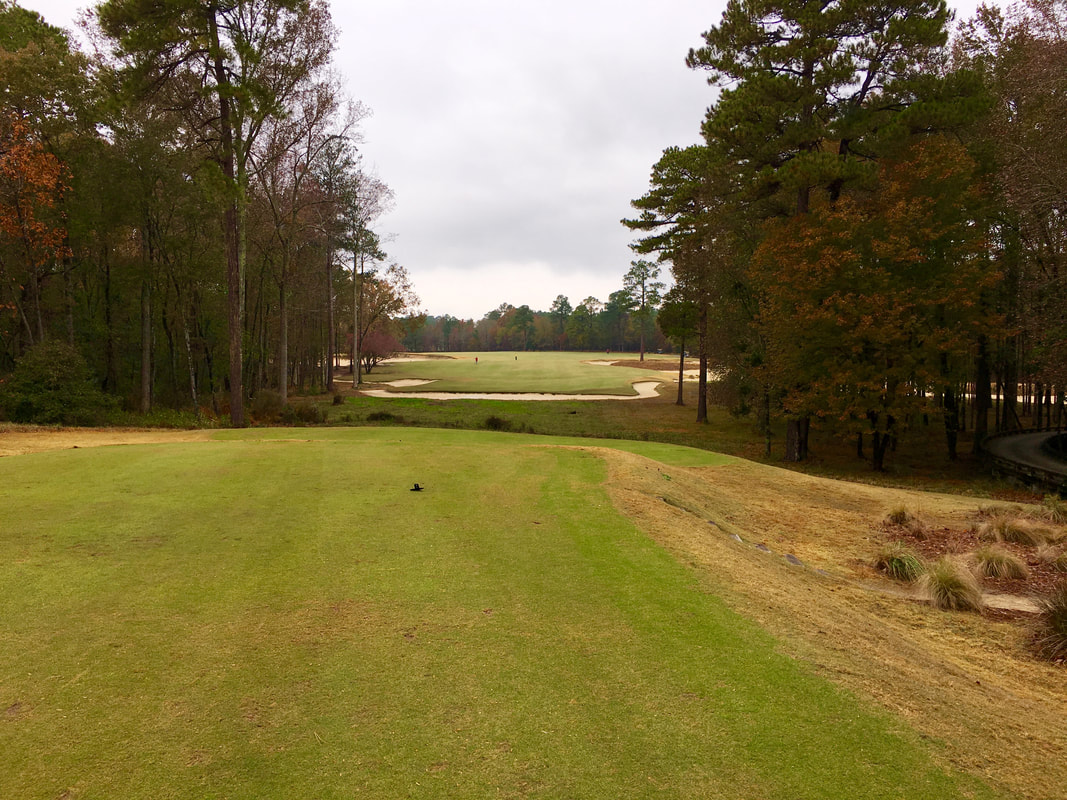
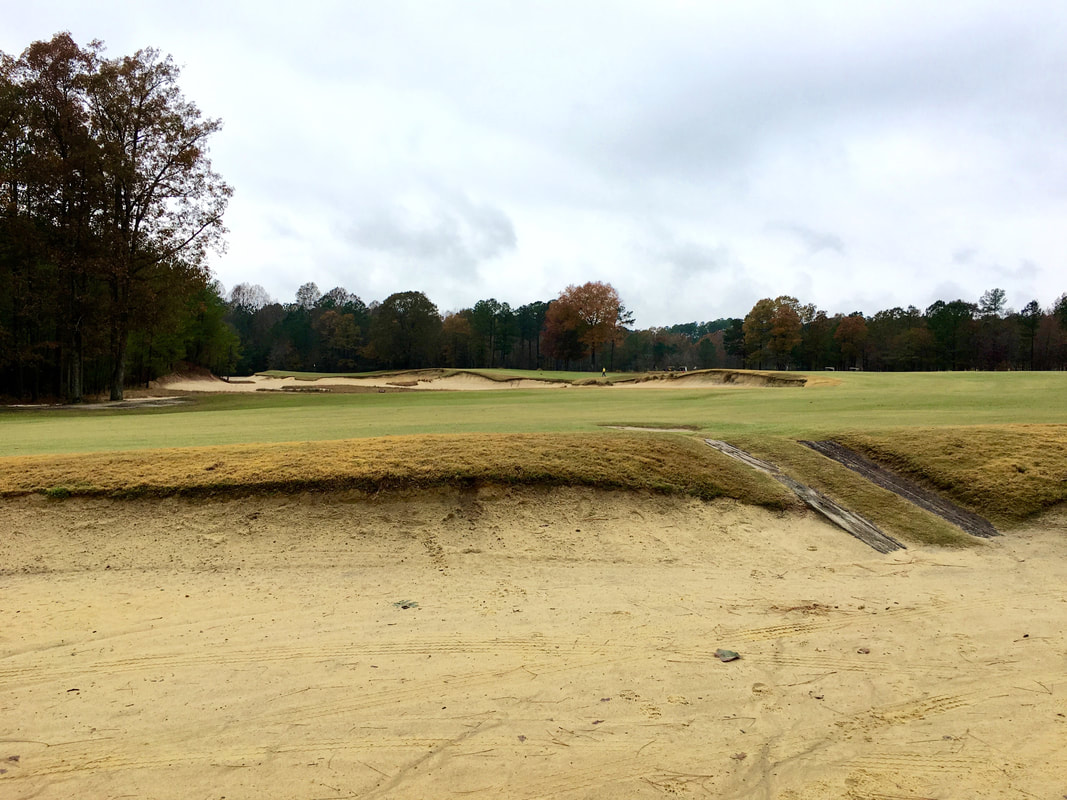
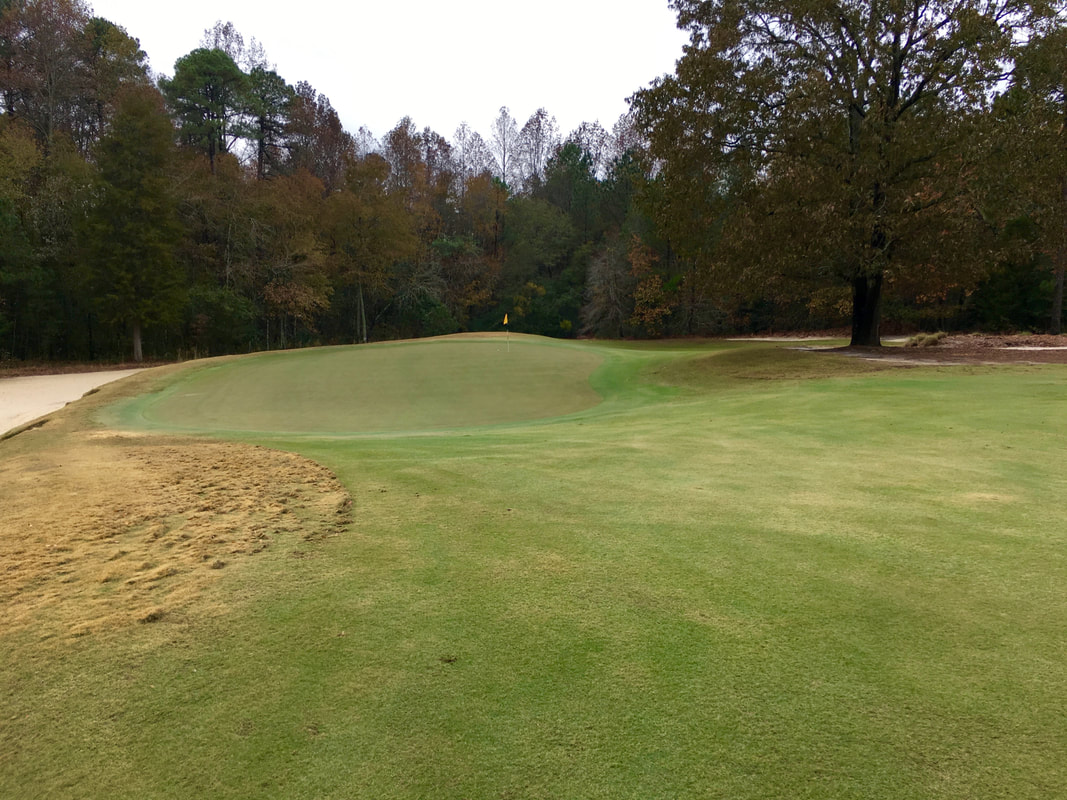
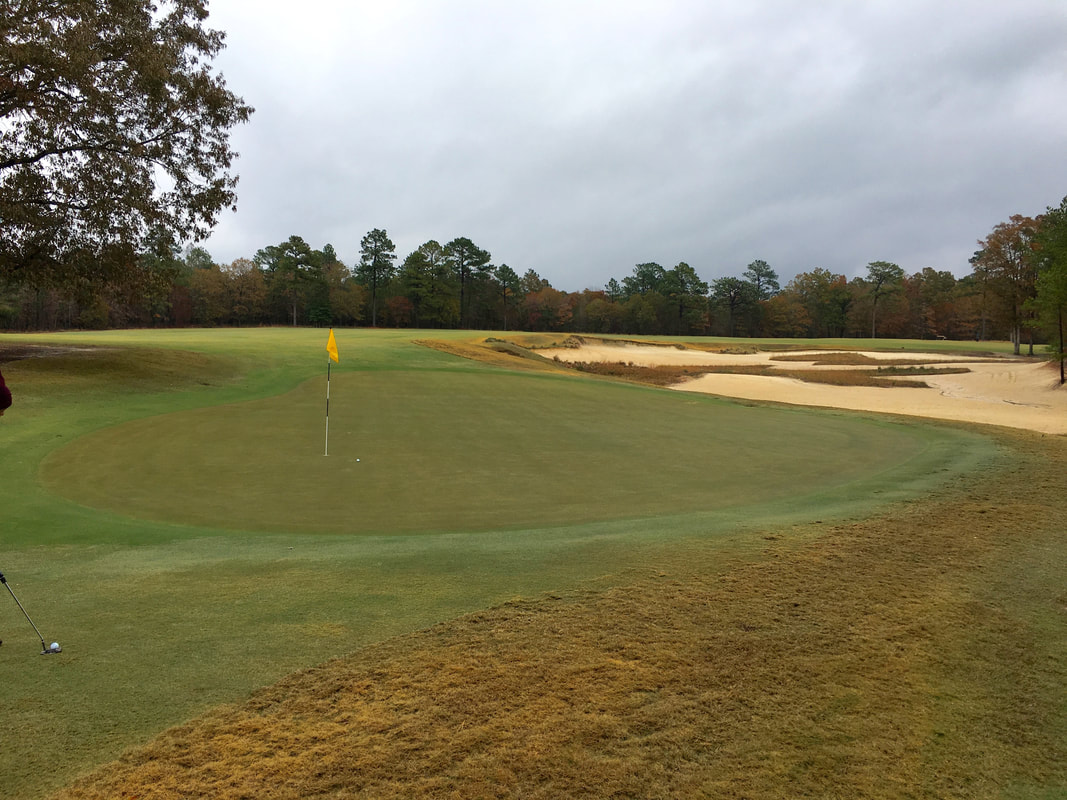
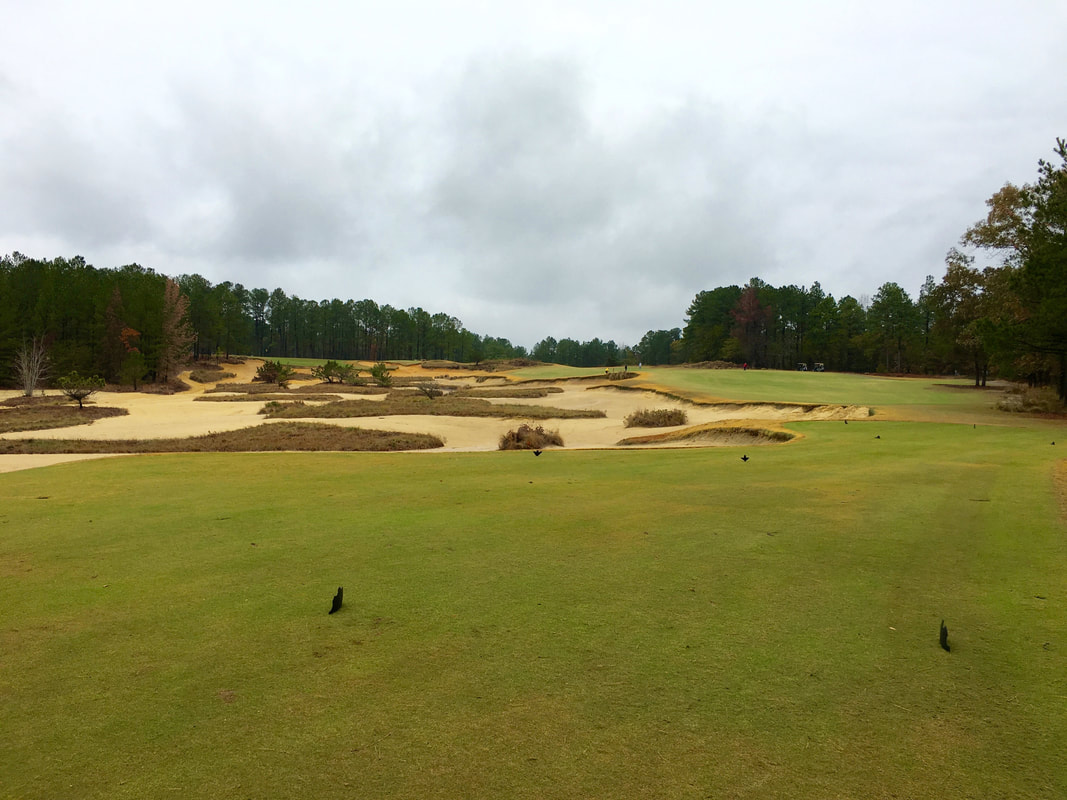
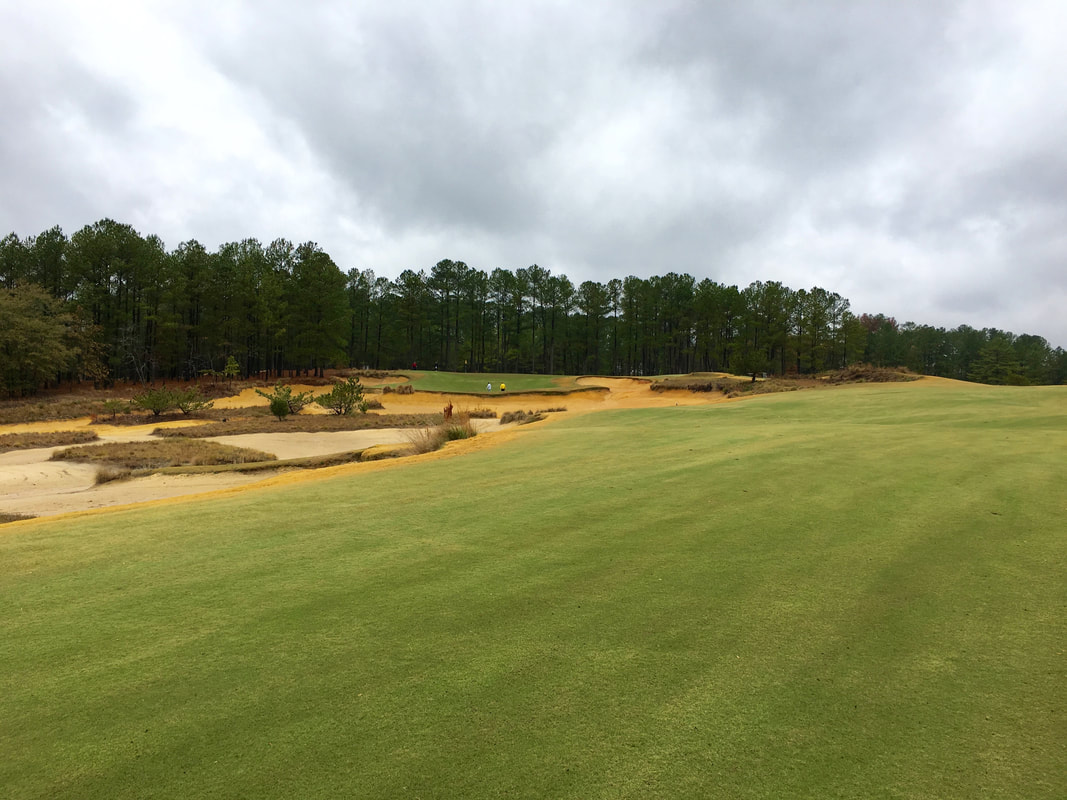
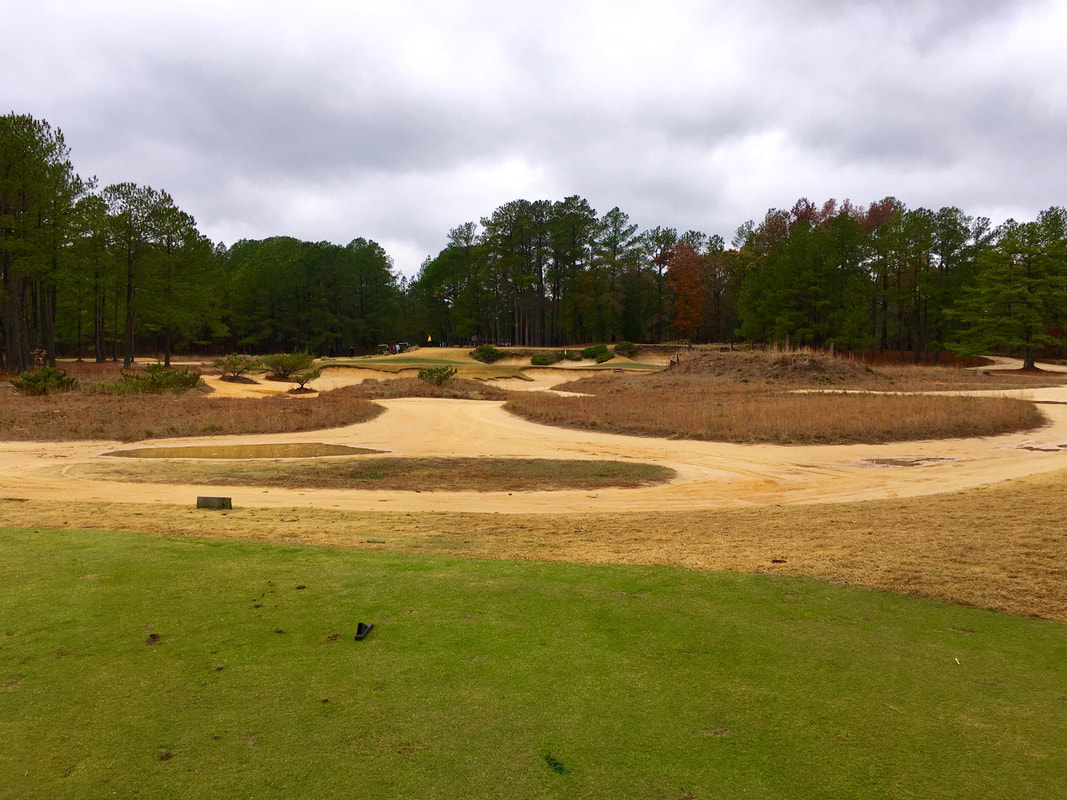
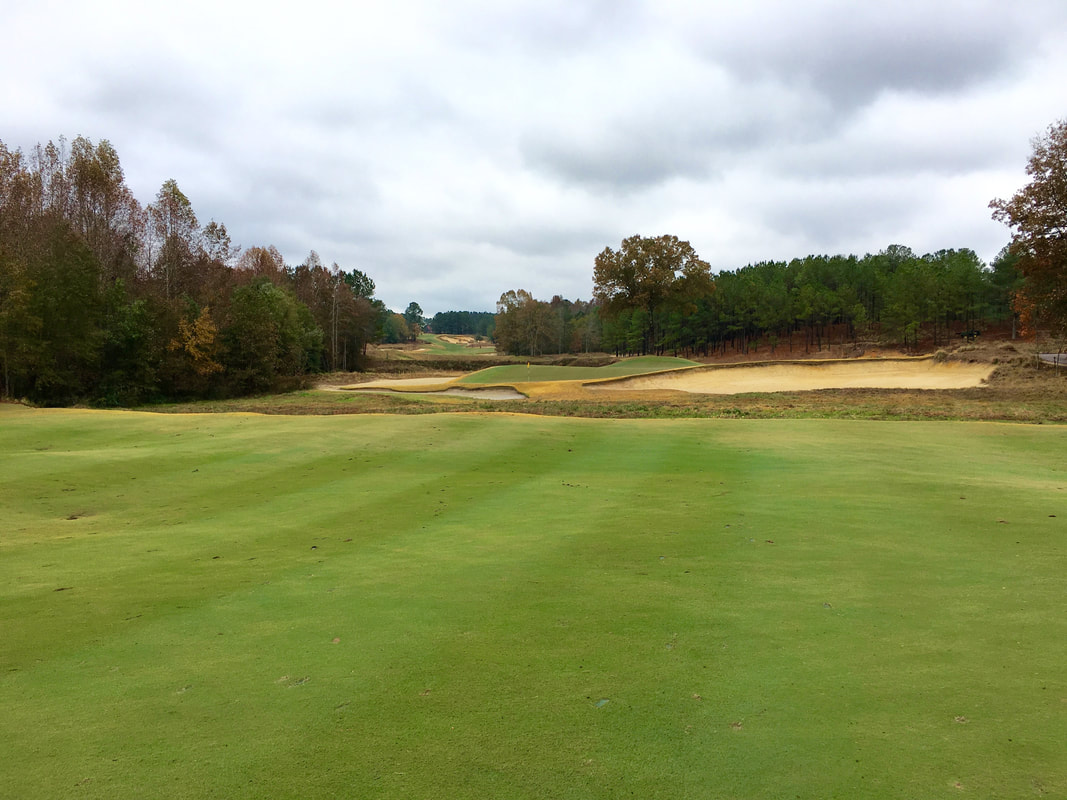
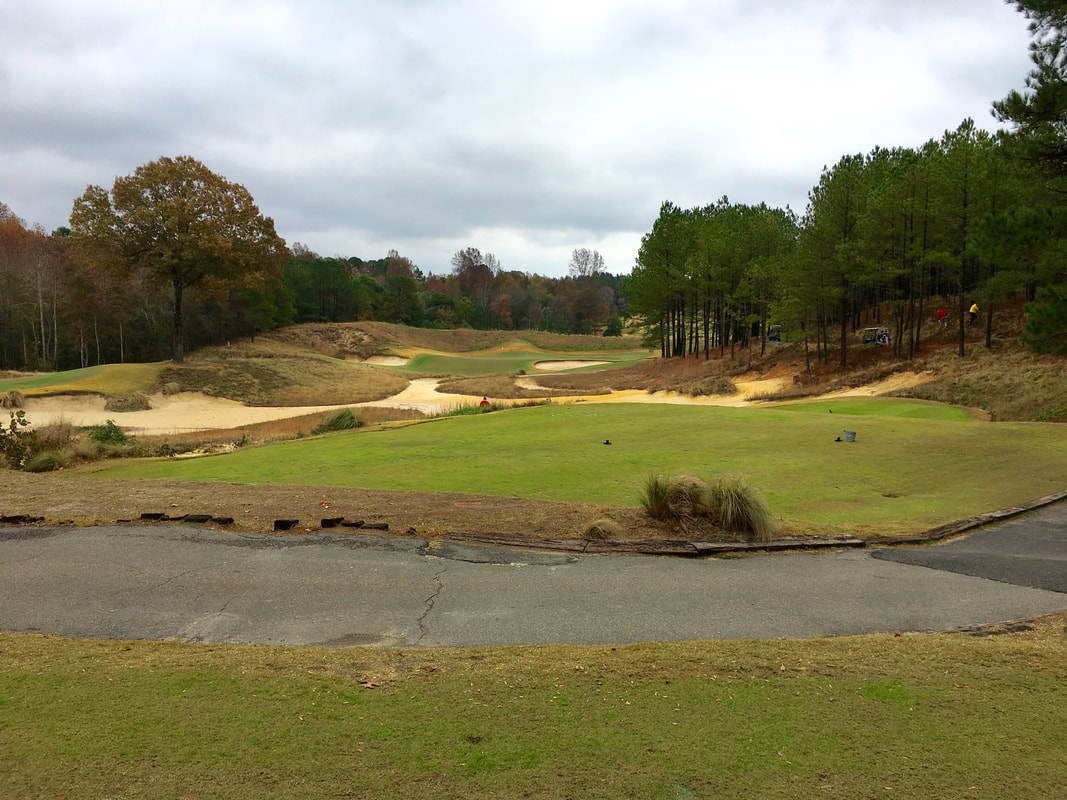
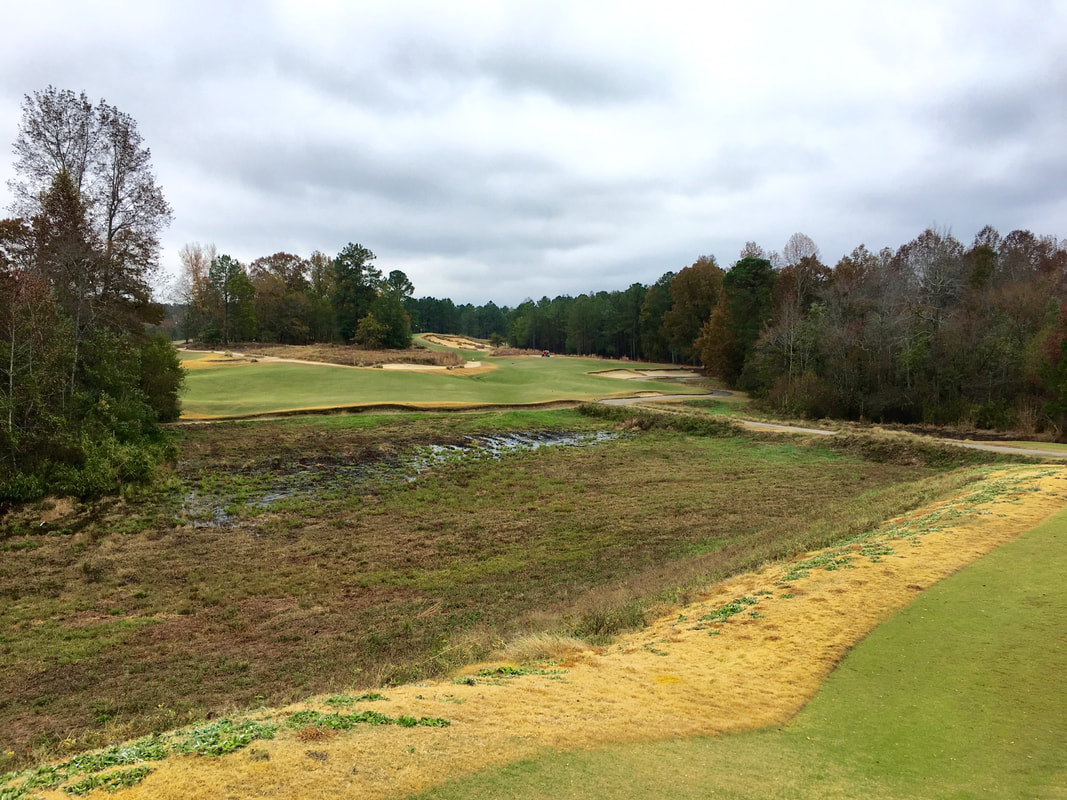
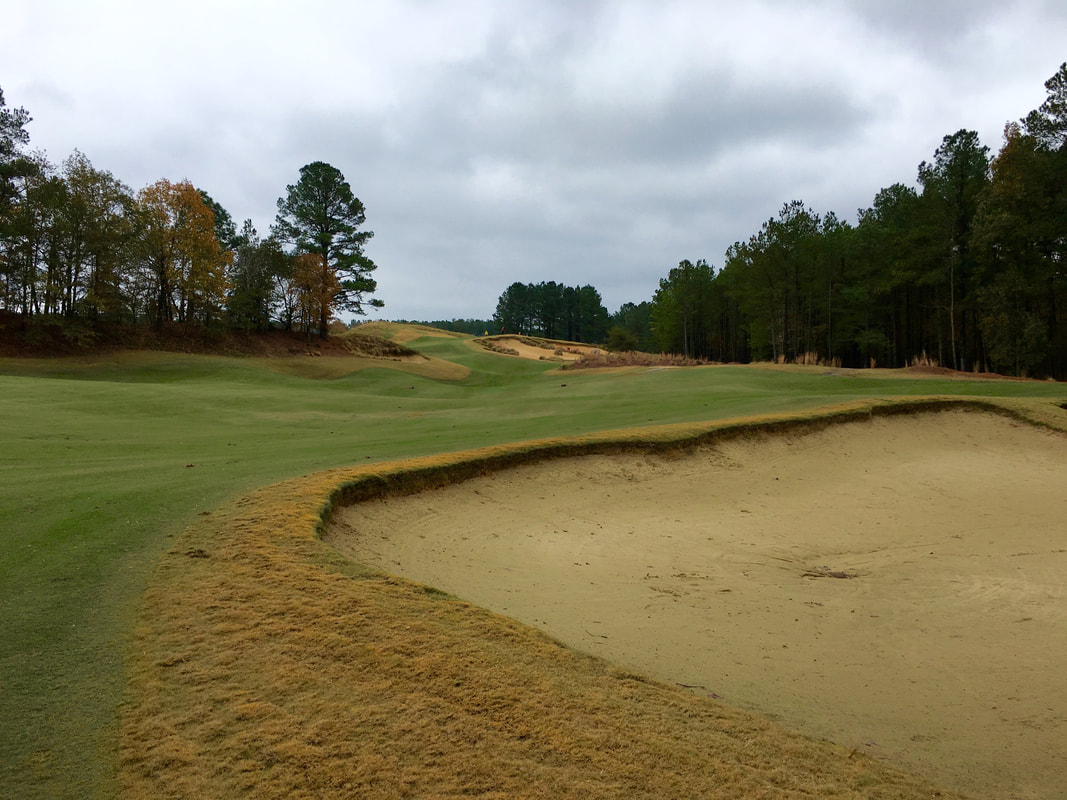
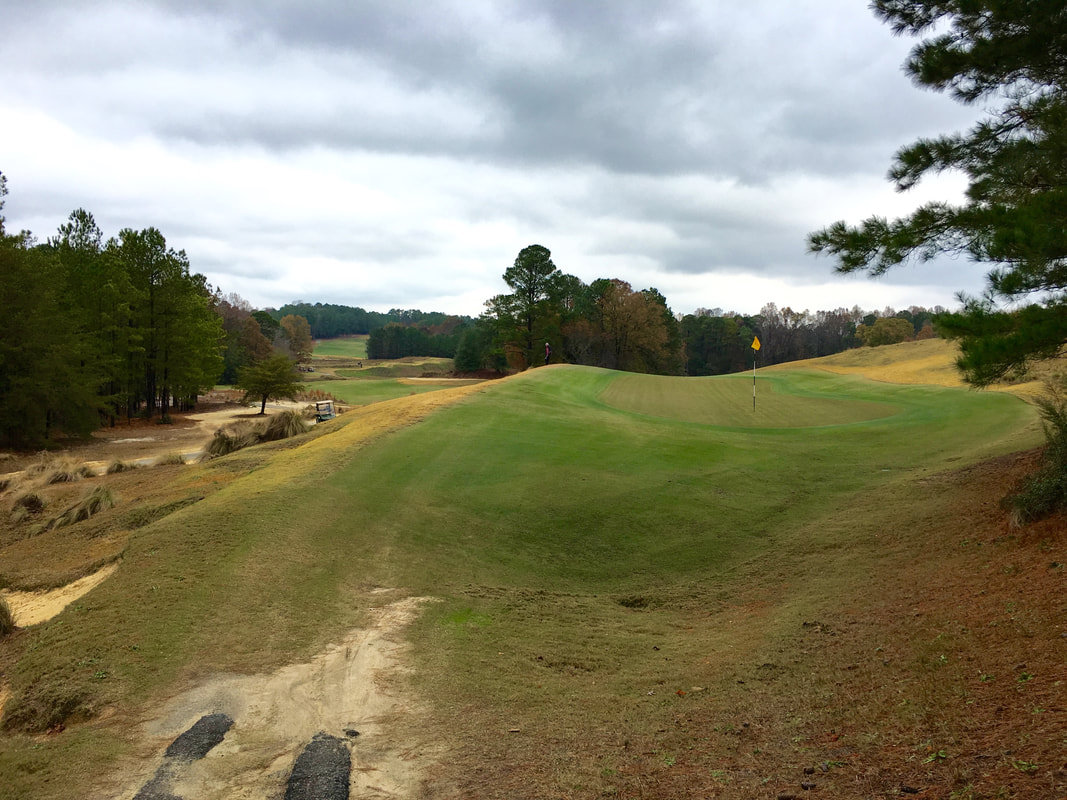
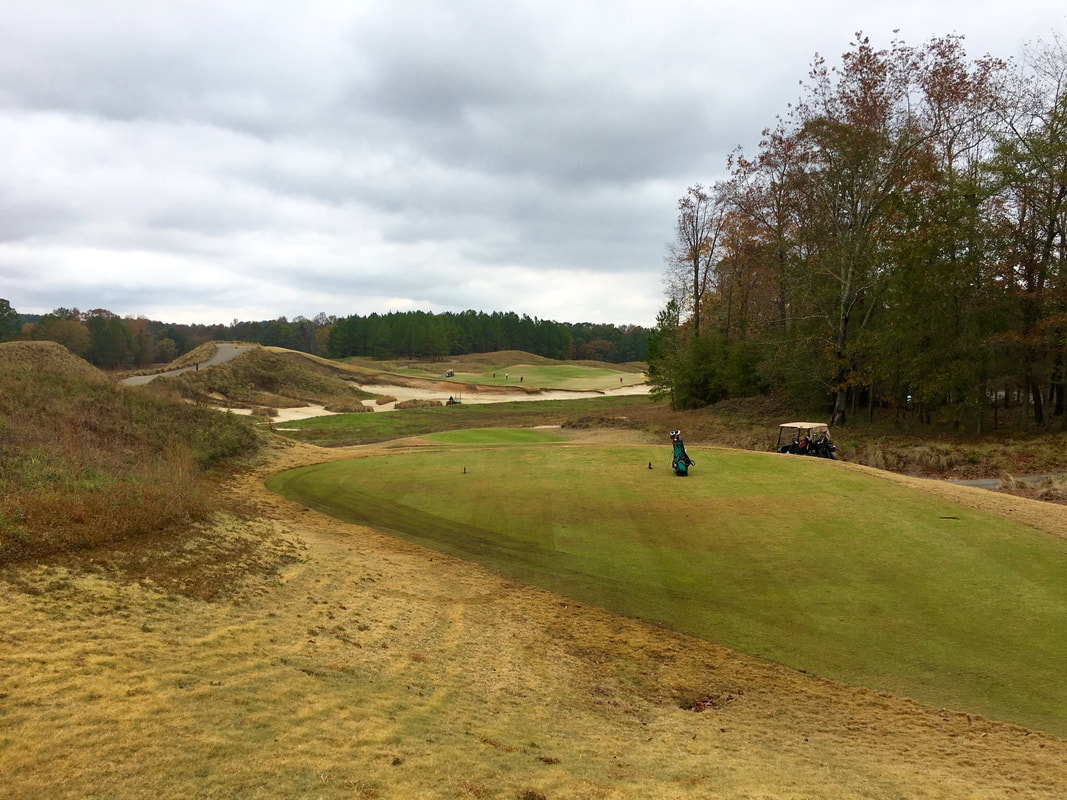
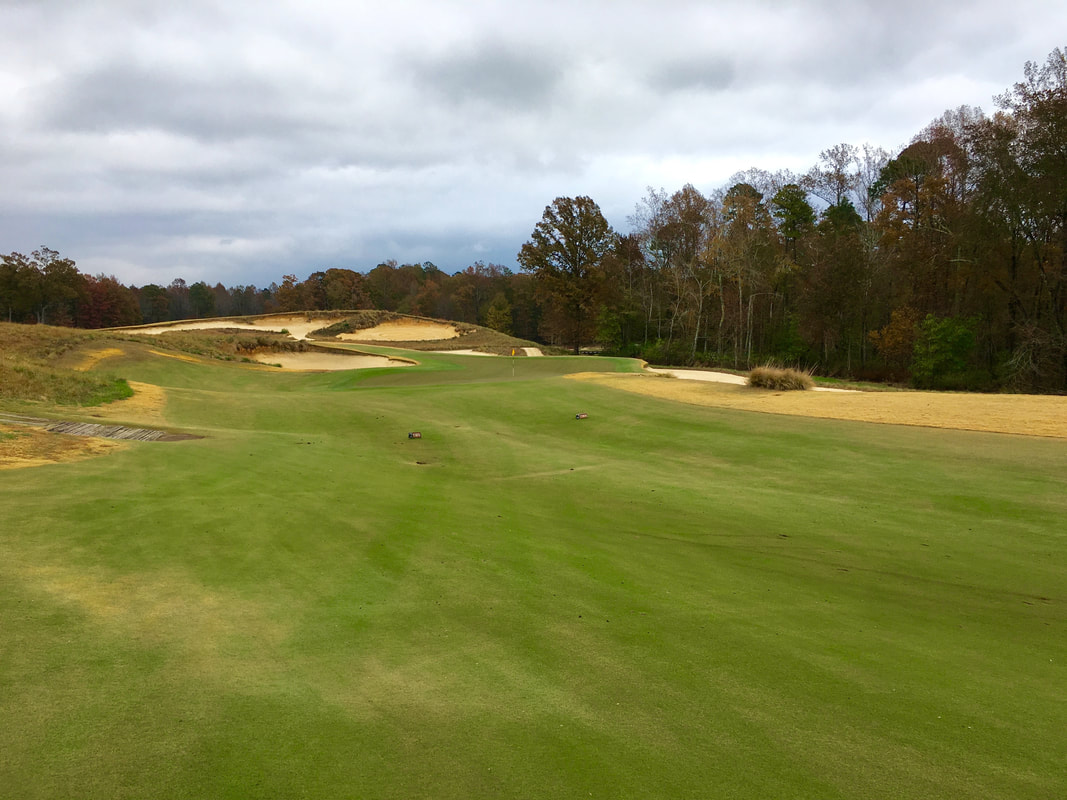
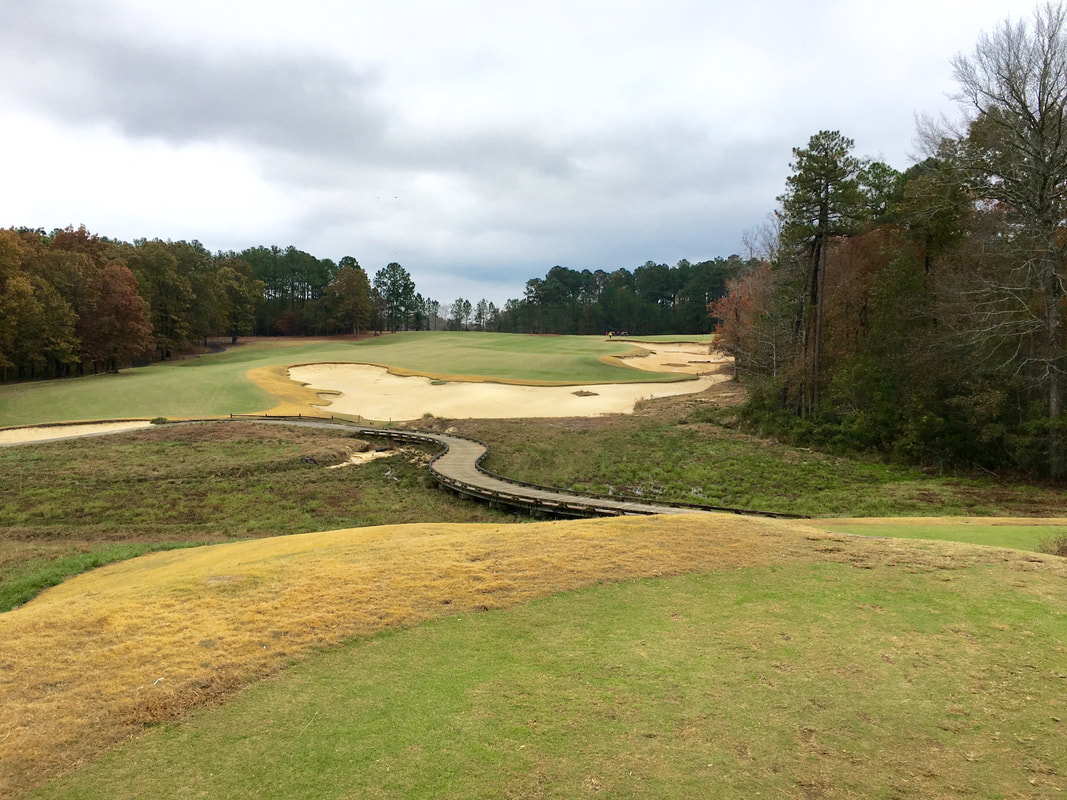
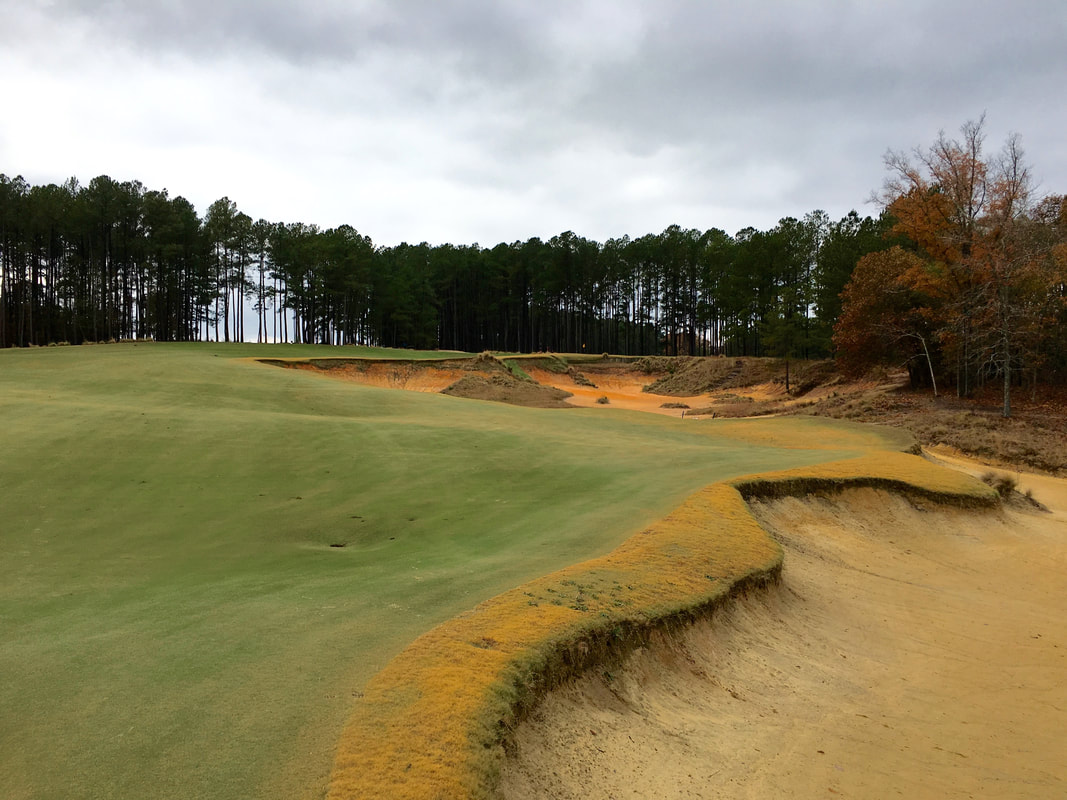
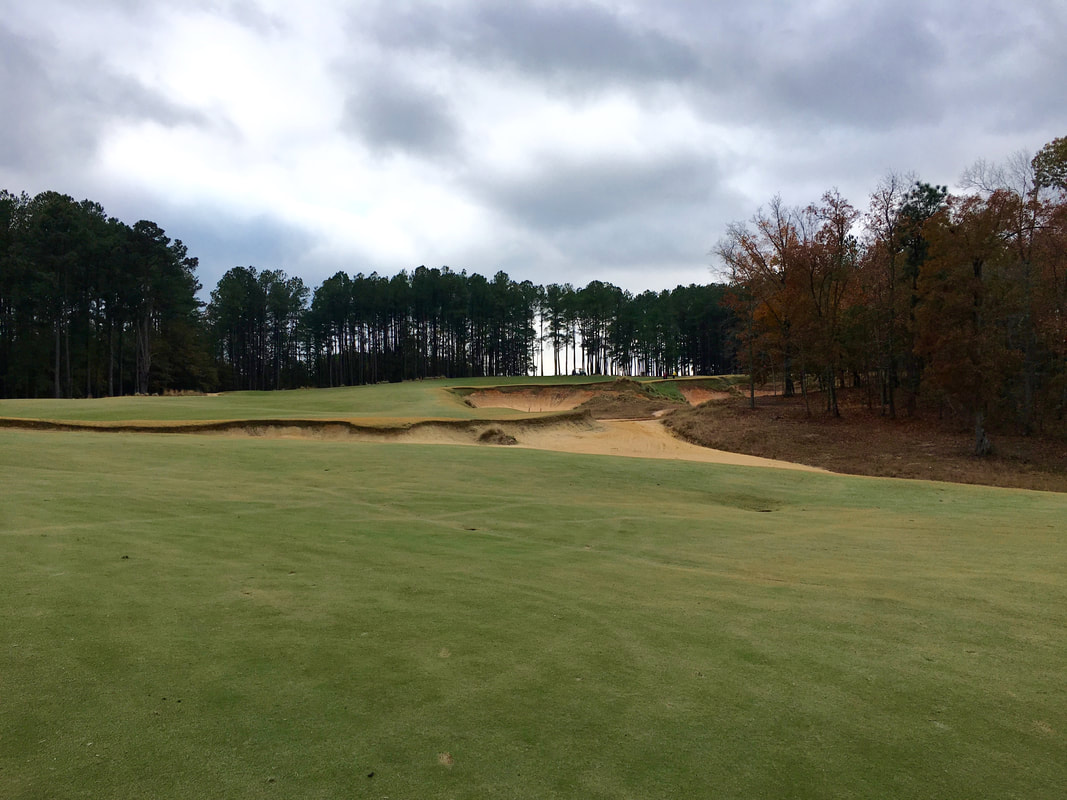
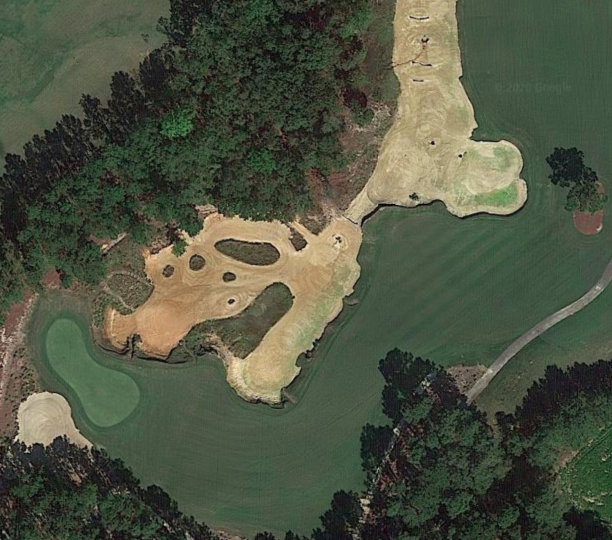
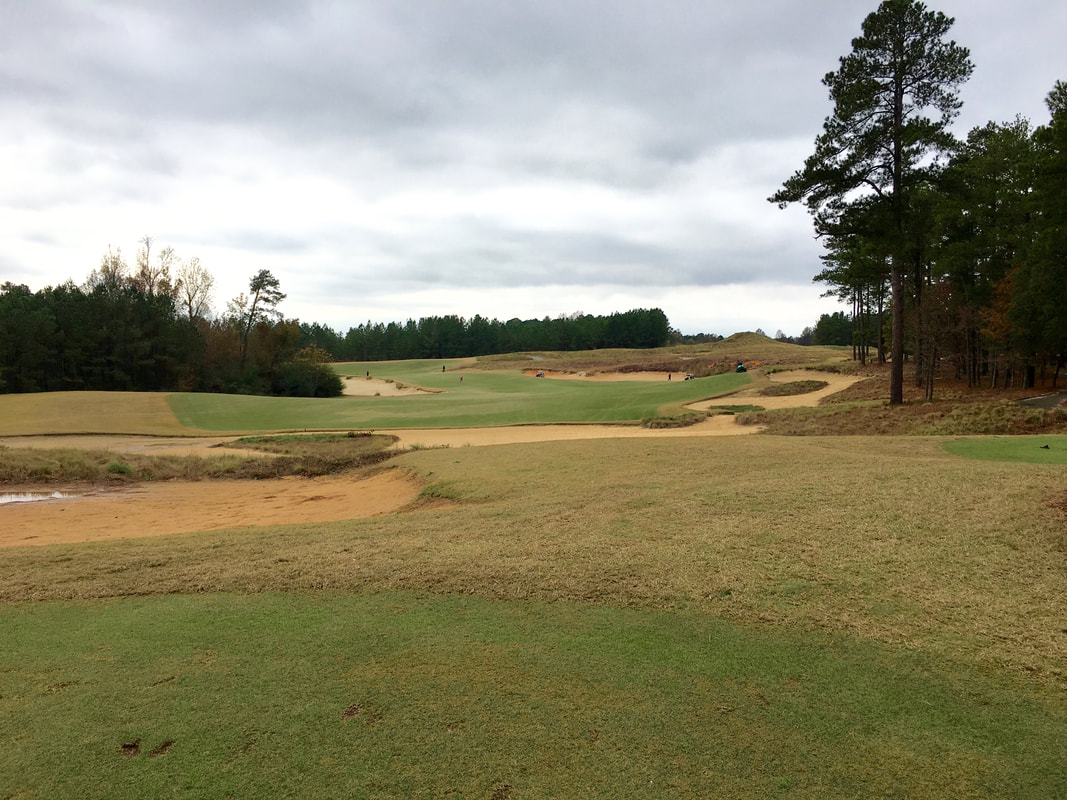
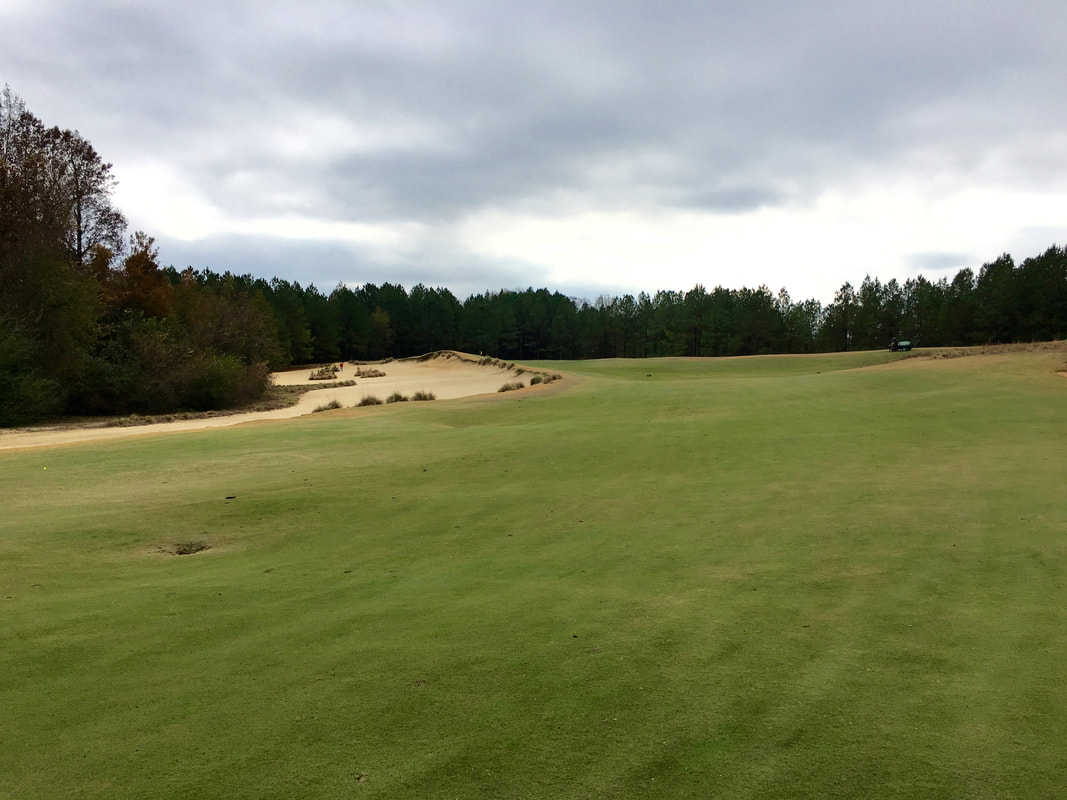
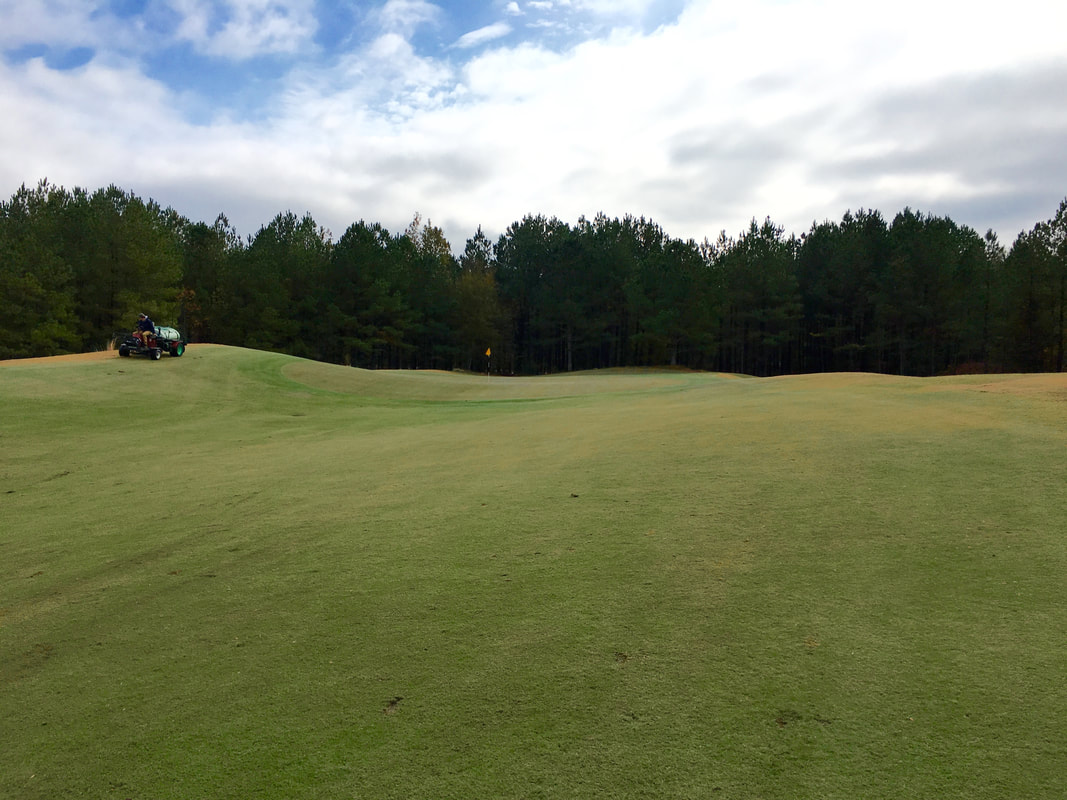
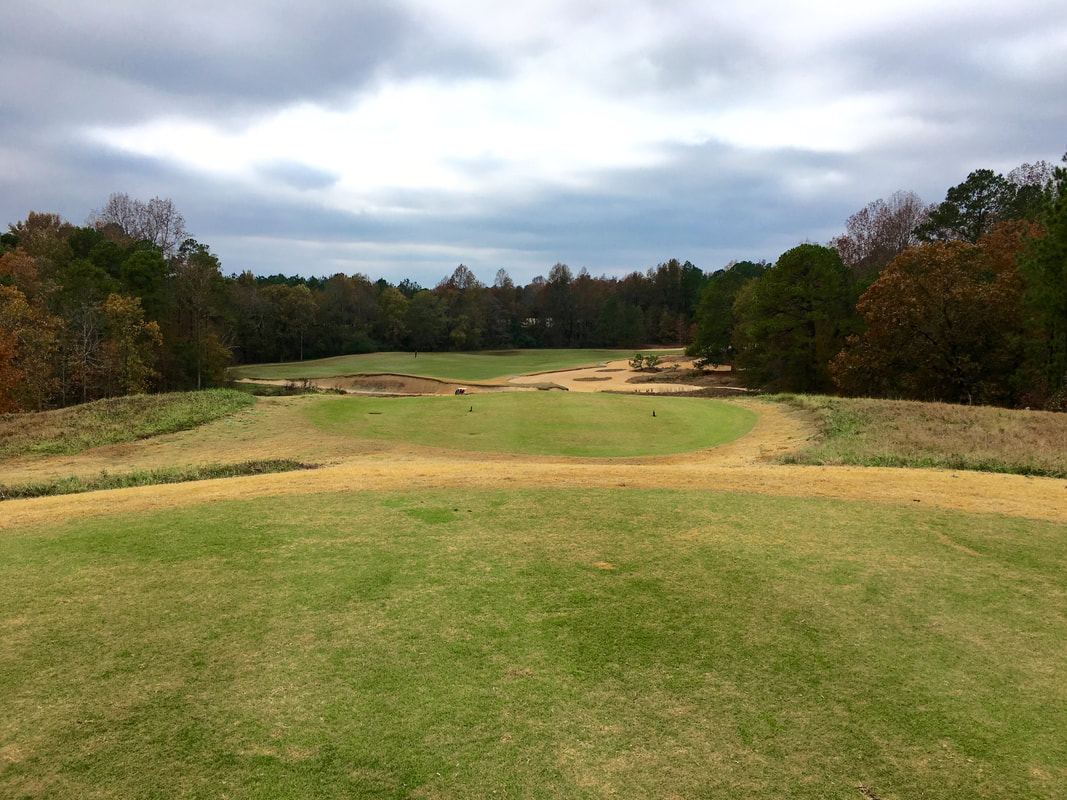
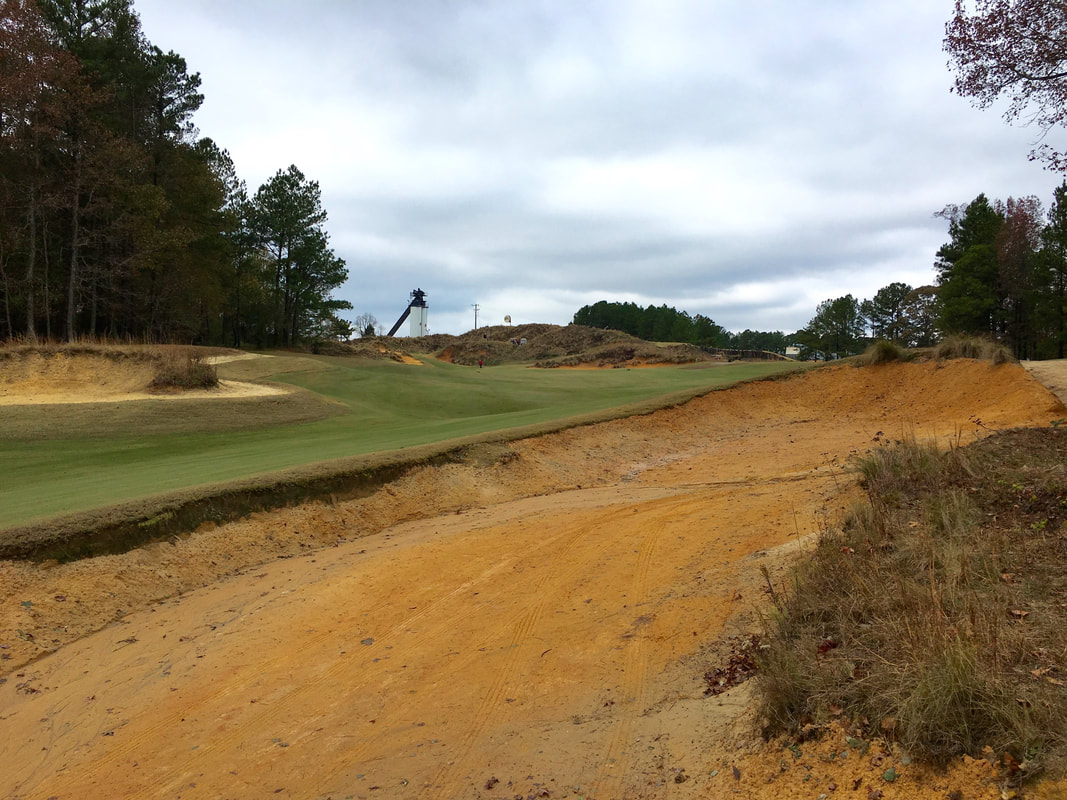
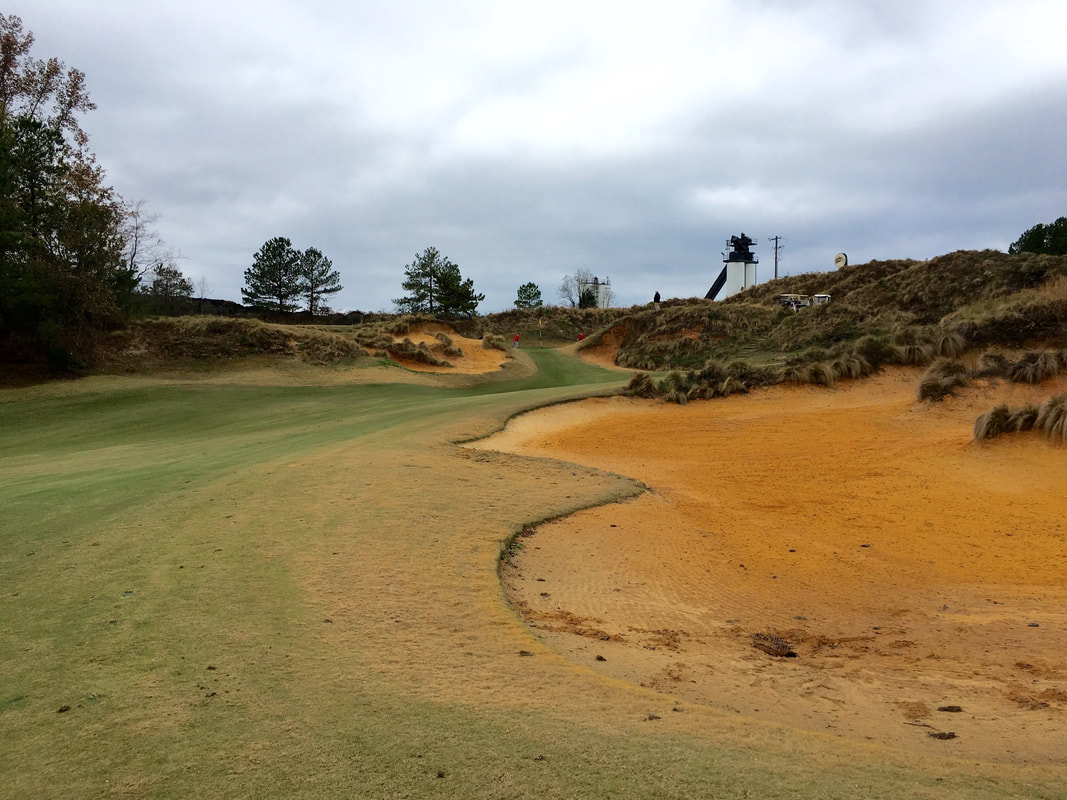
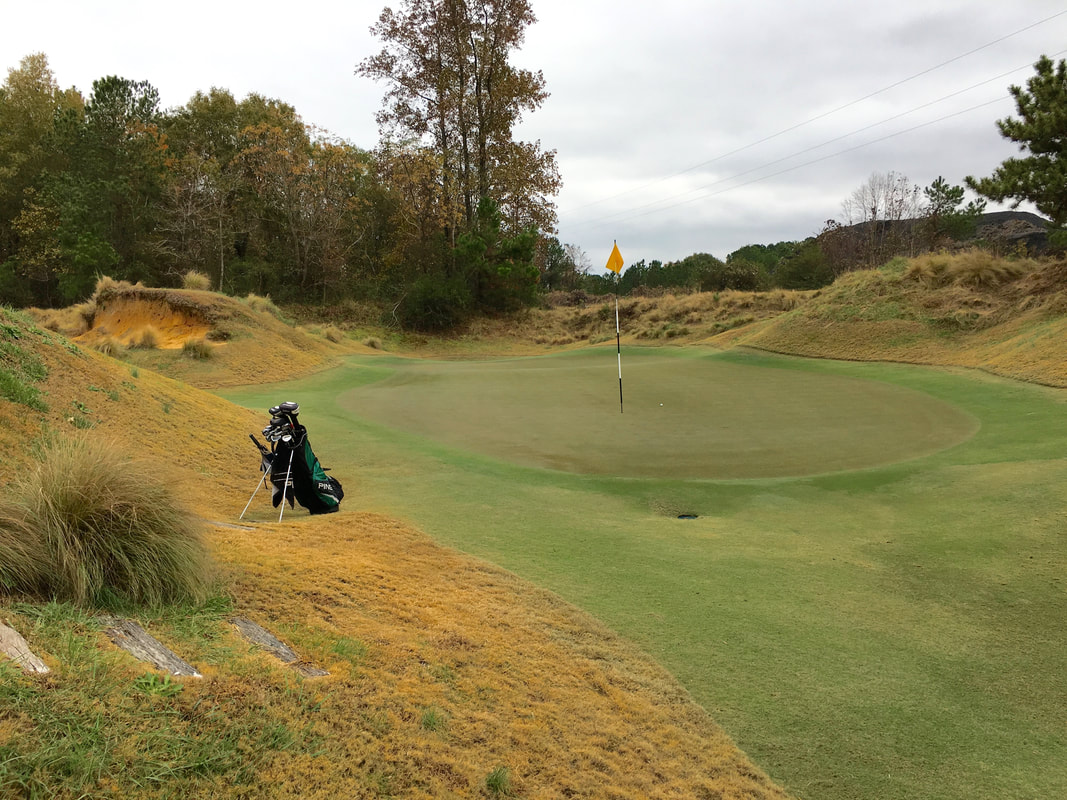
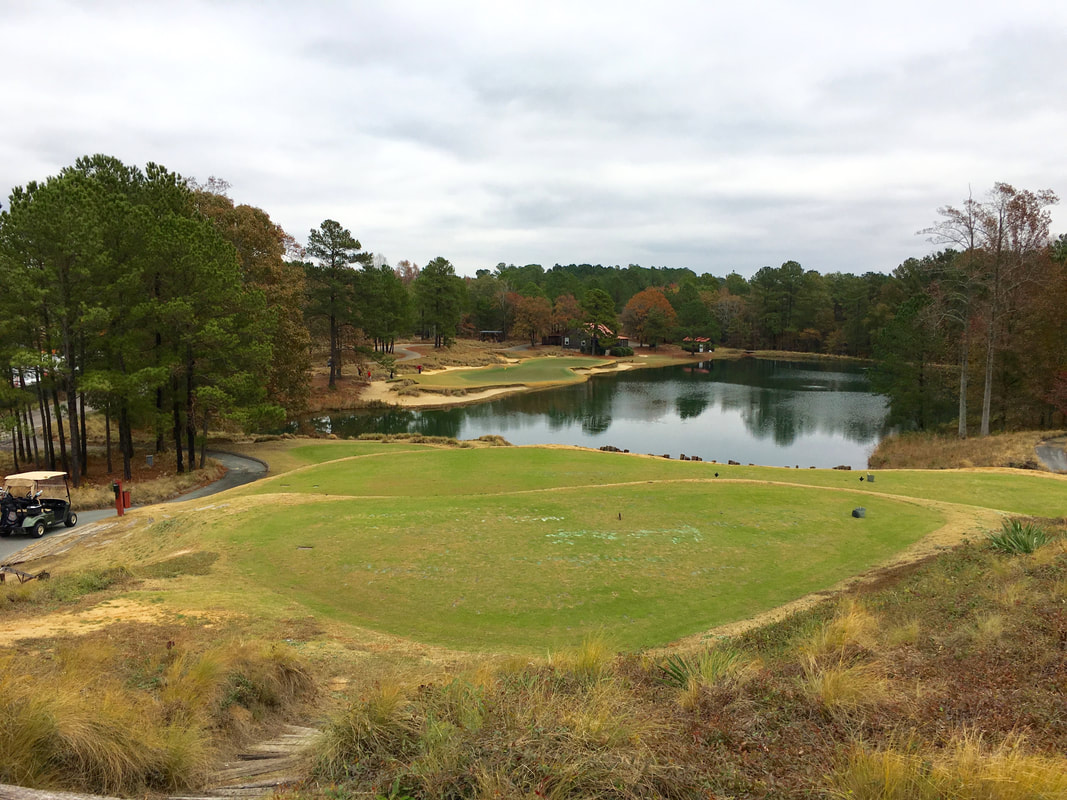
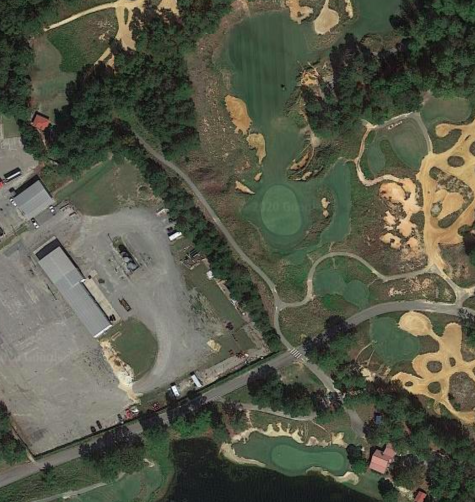
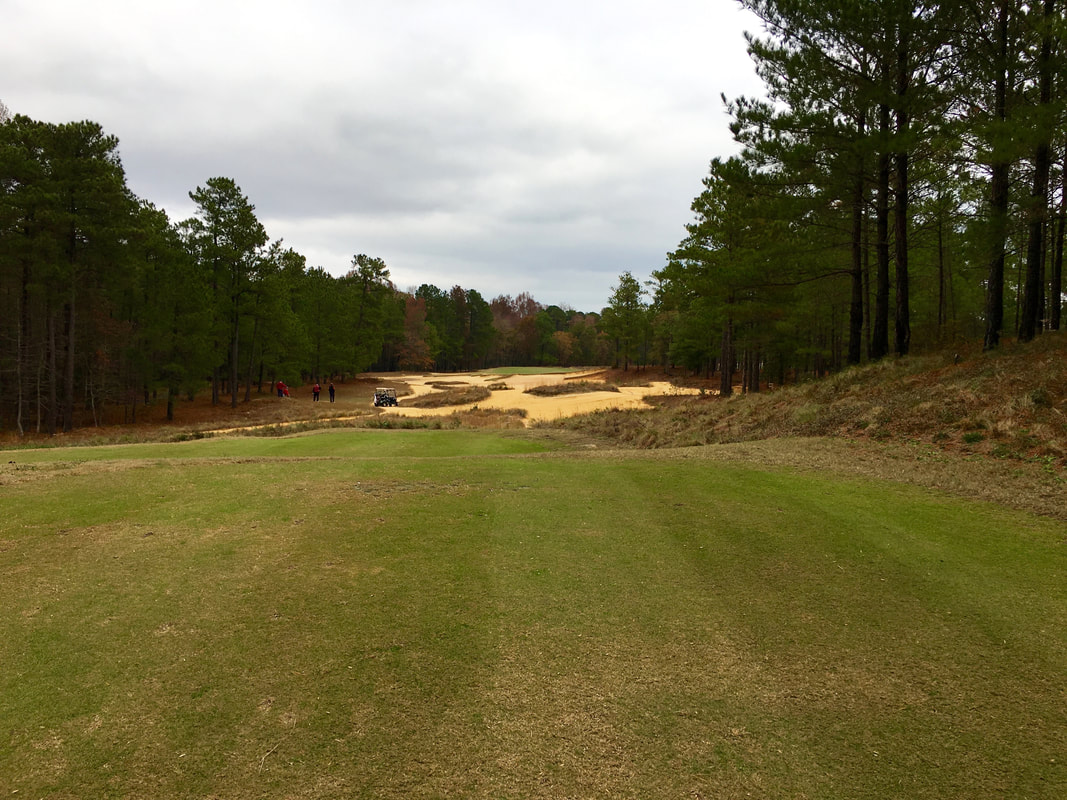
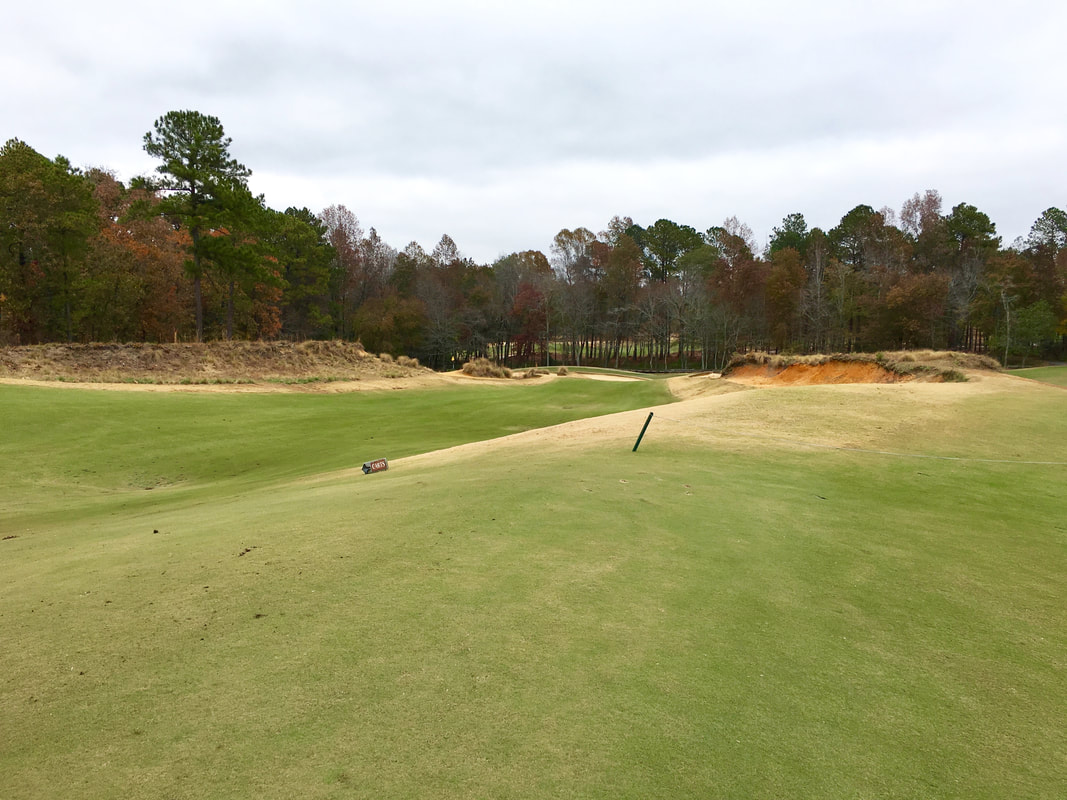
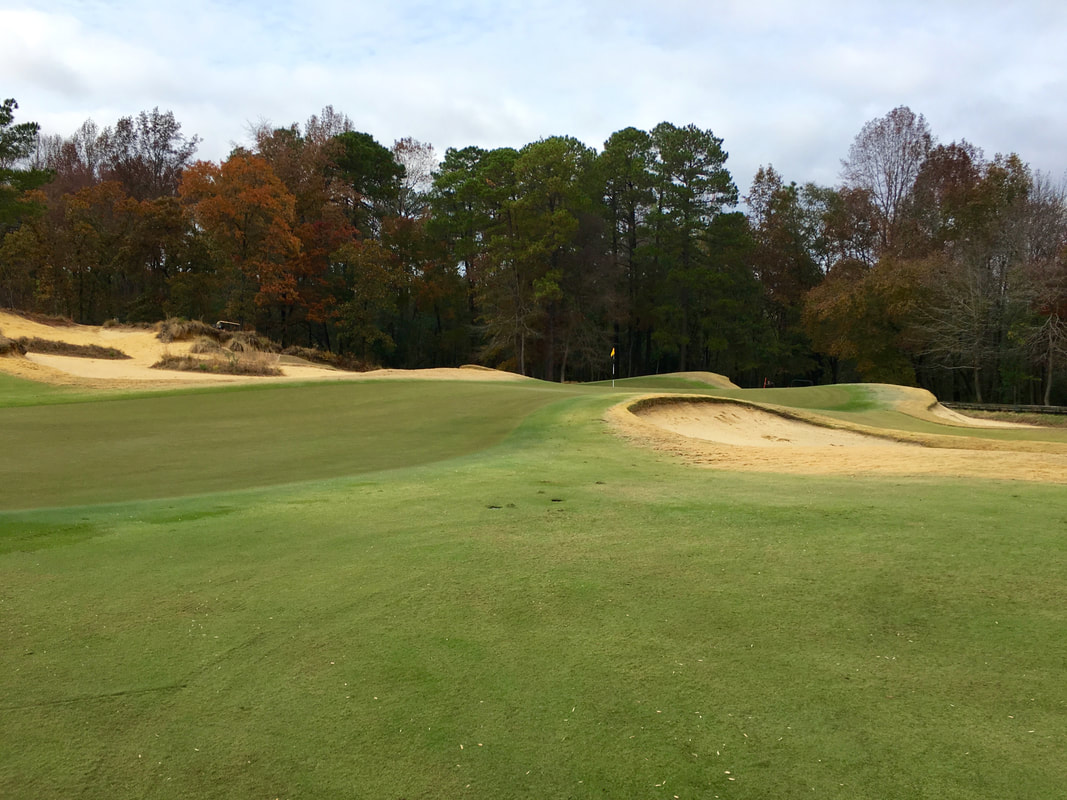
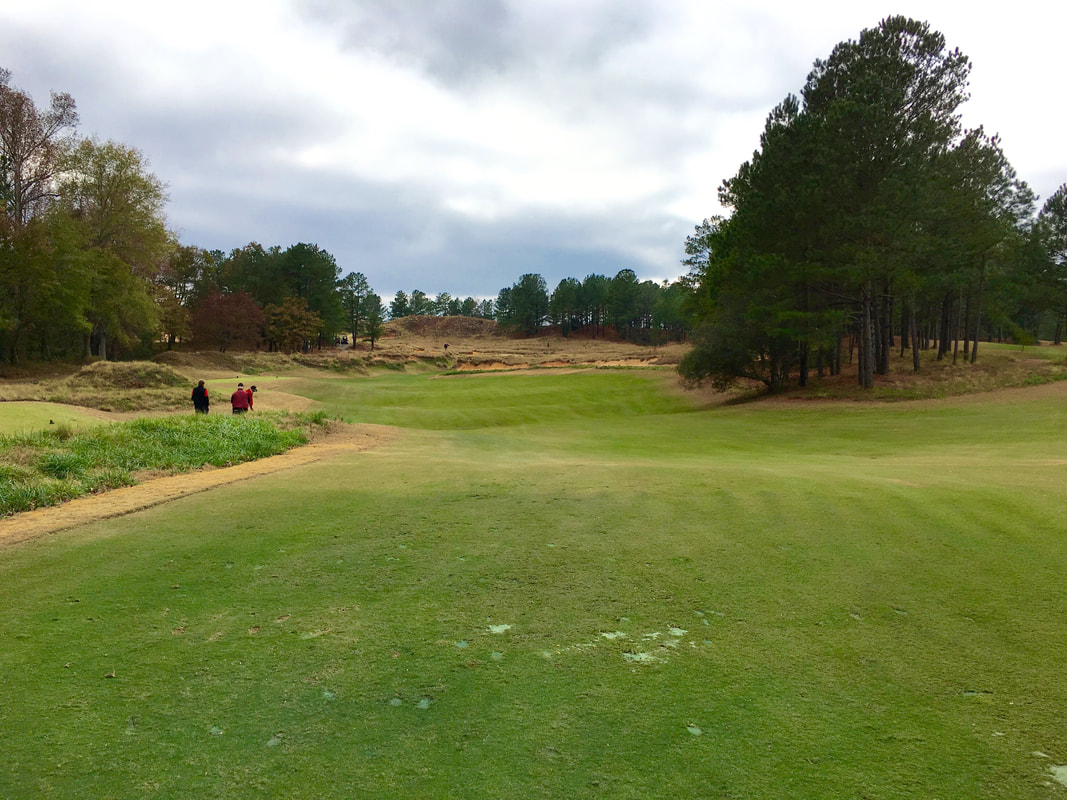
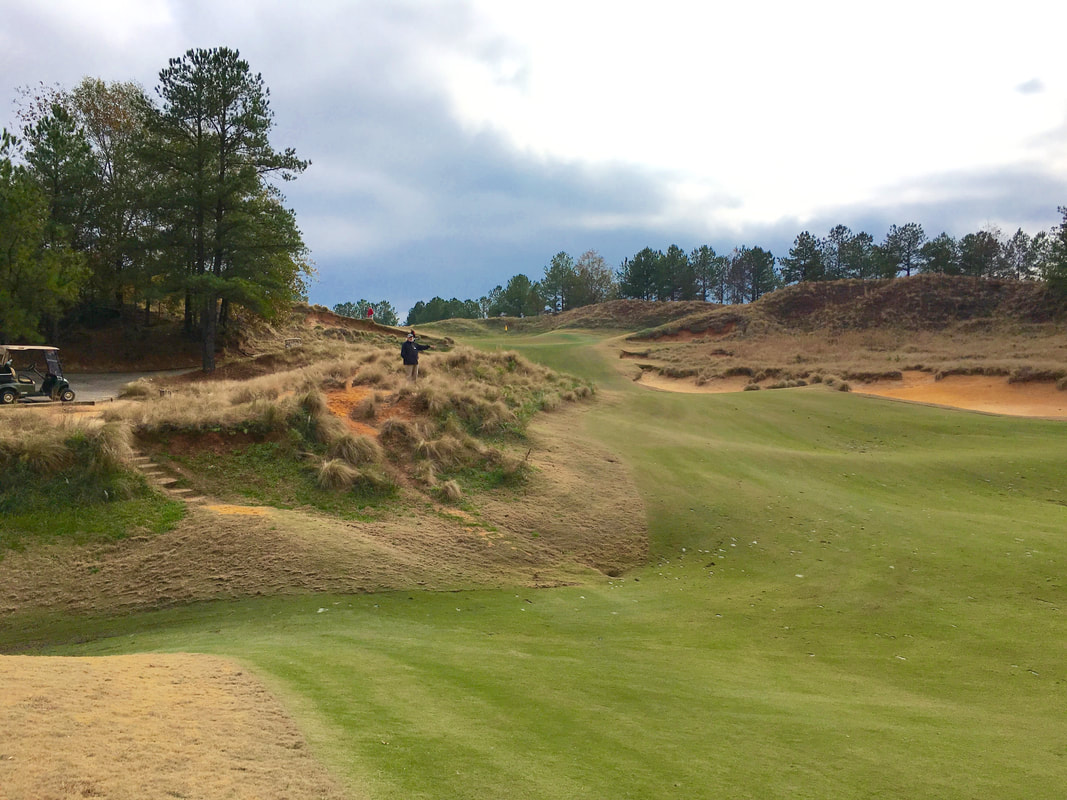
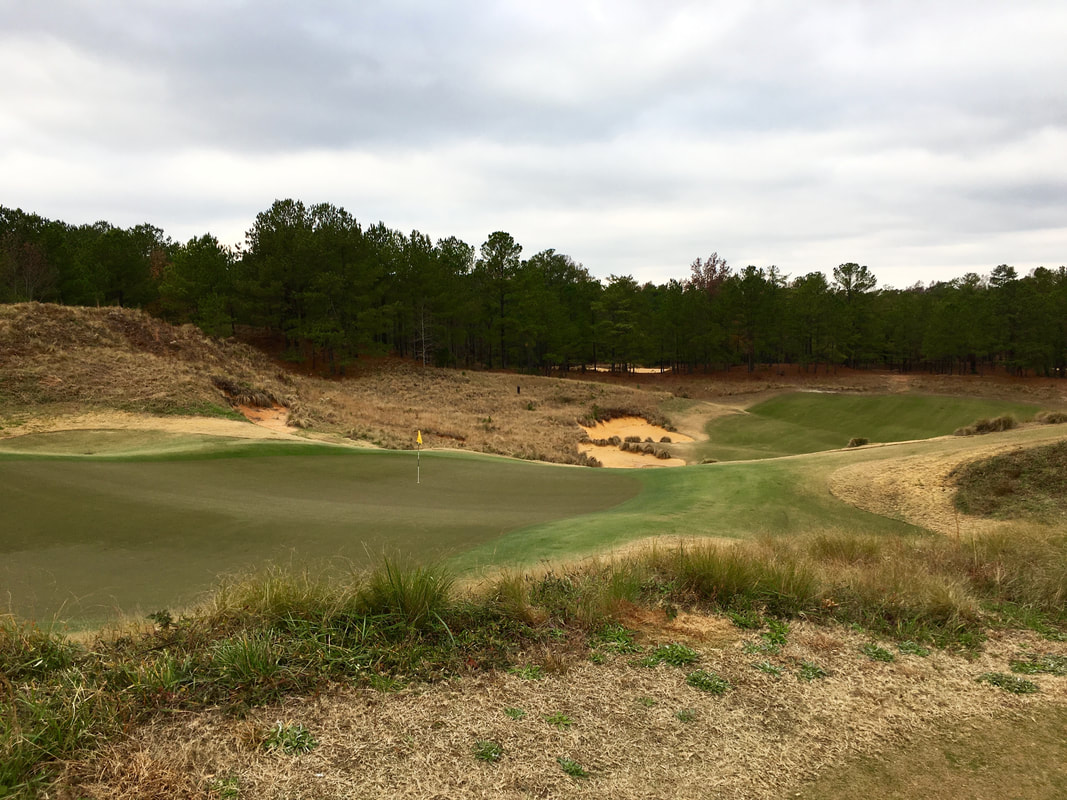
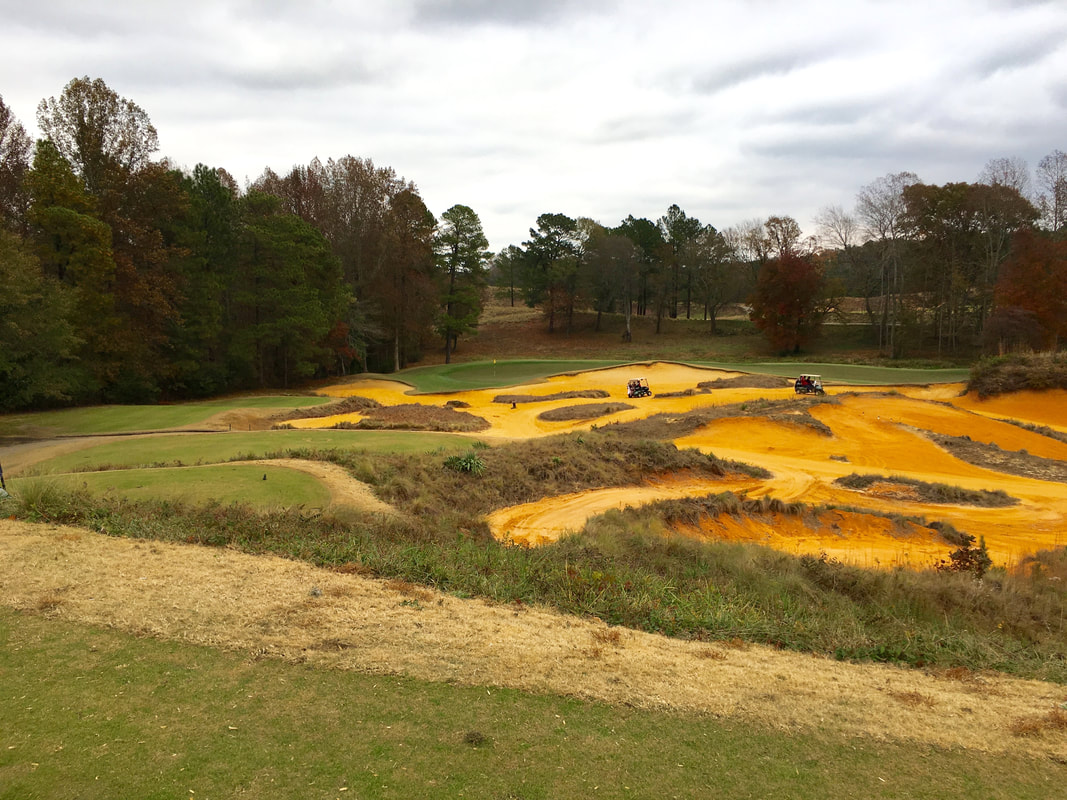
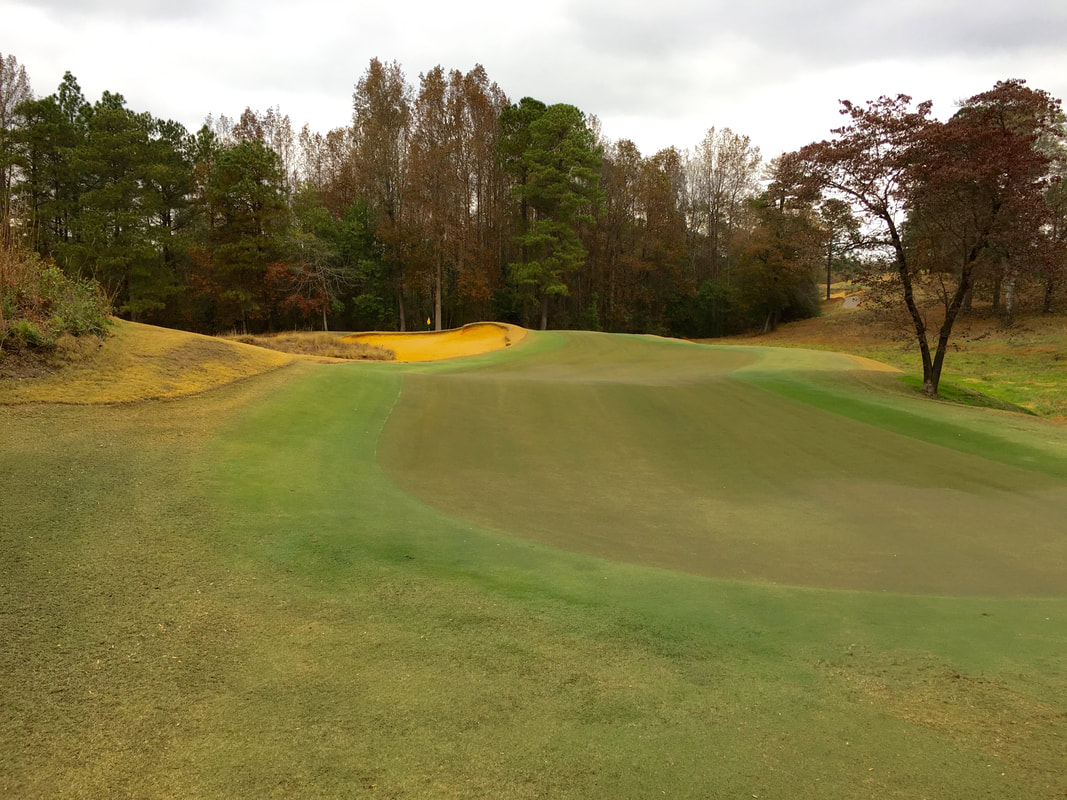
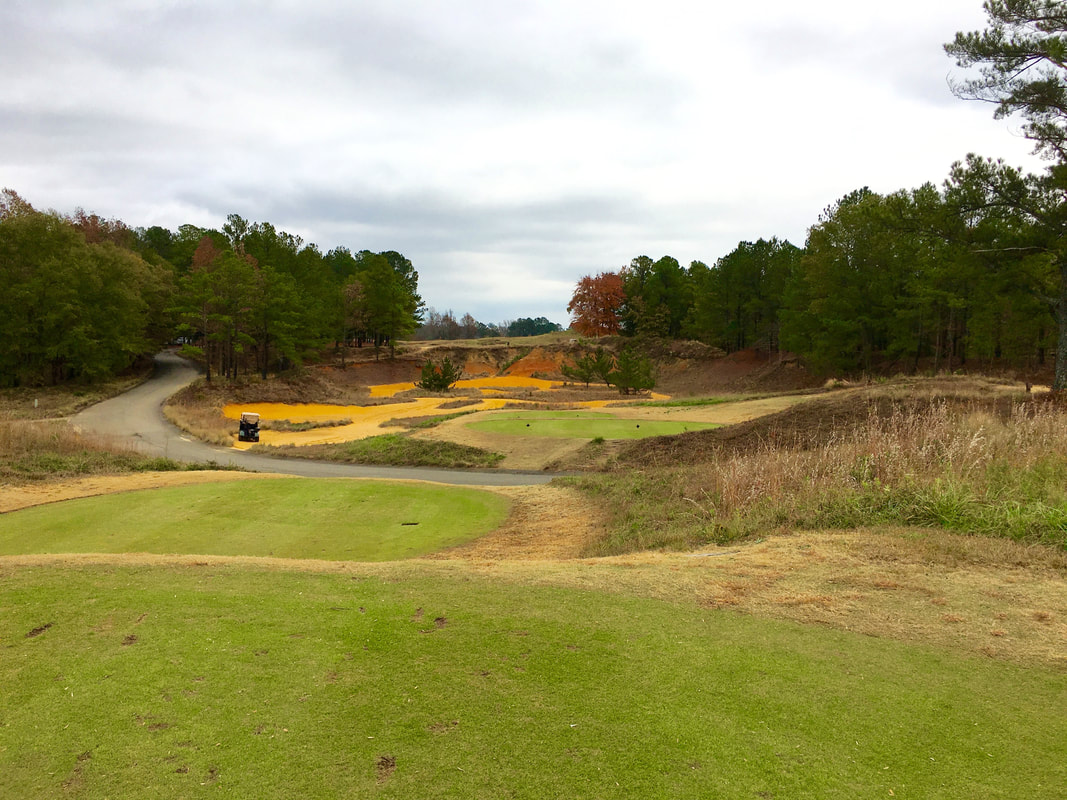
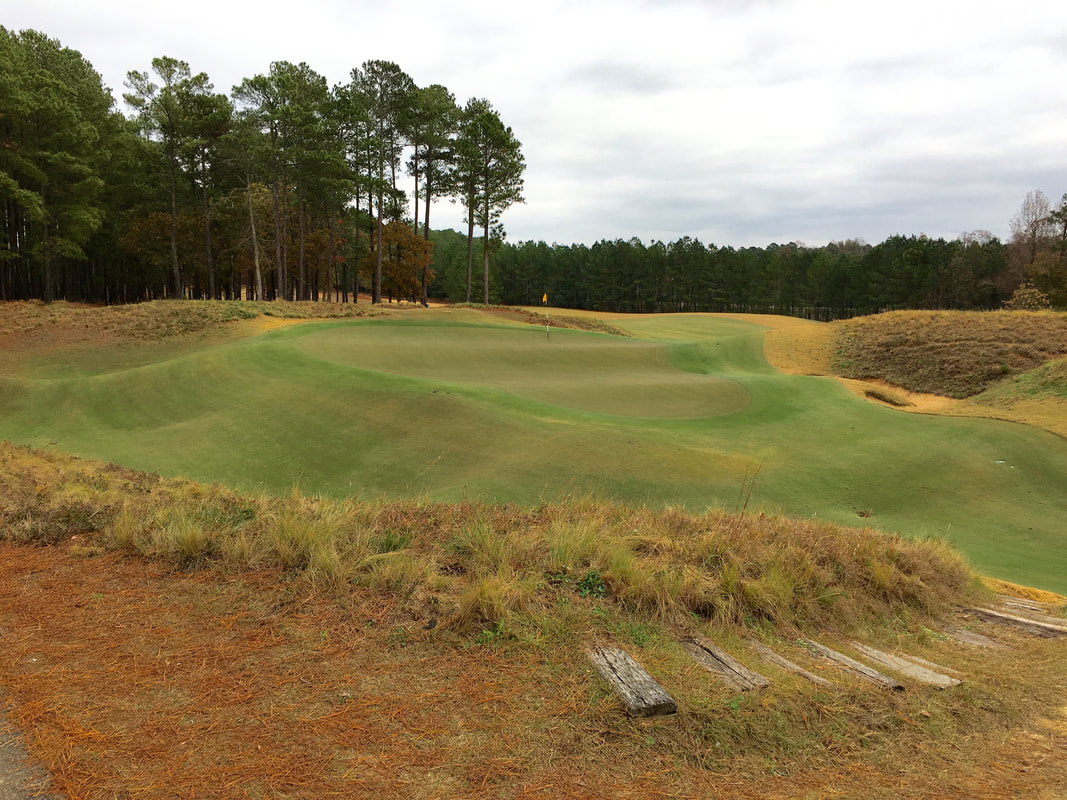
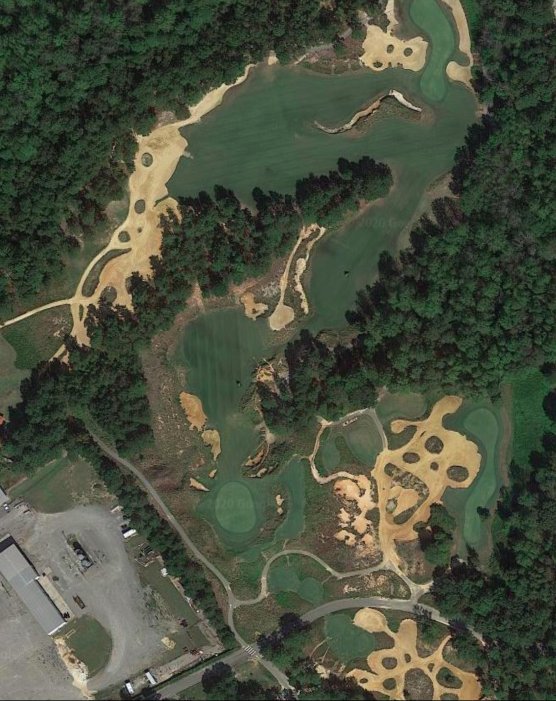
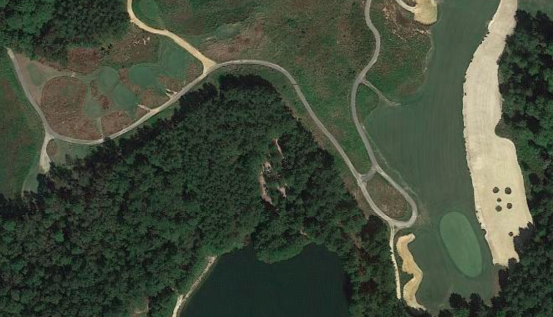
 RSS Feed
RSS Feed